




ALICE IN WONDERLAND
FROM BULB TO BLOOM
JANE AUSTEN’S TEA PARTY
RISE OF THE DIGITAL CAMERA
ALBUMS IN THE AGE OF THE SONG
GOODWILL RUNWAY




For many students at the College of William and Mary, the springtime offers a welcomed change of pace: Students finally emerge from the library, readily embracing the warmer weather, and oncedormant flower beds spring to life across campus and Colonial Williamsburg, beckoning them to abandon their schoolwork in favor of a sunny stroll. In settling on the theme for this issue, we were immediately drawn to “Garden Party” for its relevance in describing how students often choose to spend their spring semester. Our status as Jane Austen lovers, combined with the potential for an Austen-themed photoshoot, also proved enticing. We would be remiss not to thank Ellie Kurlander, former Editor-in-Chief, for the initial suggestion and for all her subsequent support.
In honing our vision, we sought inspiration from Autumn de Wilde’s 2020 film adaptation of Emma alongside the ever-charming Southern Living magazine. Ultimately, our Garden Party theme enabled us to capture both sides of the classic Williamsburg spring, especially through our anything-but-gardenvariety photoshoots. “Alice in Wonderland,” appropriately shot on a dark, rainy day, showcased the gardens at the Governor’s Palace months before the plants came back to life, while our Austenian Tea Party boasted bright blues and greens, bursting with the excited energy that we so often feel during the spring transition.
On theme, our writers dug deeper into the local greenspaces and those who care for them, from interviews with the Head of Landscaping for Colonial Williamsburg to investigations into desire paths on campus. We looked forward and backward at cultural crazes, all while taking time to reflect, to frolic, and to “stop and smell the roses.”
We are overwhelmingly grateful to our staff for the support we have had in assembling this issue and for the opportunity to serve them as Editors-in-Chief. Their constant patience, creativity, and openness to trying new things enabled this semester to run more smoothly than we had ever hoped. Each and every team — Copy, Creative, Style, Photography & Graphics, Digital, Standards & Practices — was instrumental in bringing it all together, and they arrived each week ready to devote their utmost effort to making this the best issue yet. Special thanks belong to our Chief-of-Staff, Rebecca Altman, for taking on any odd job we sent her way and for offering thoughtful advice exactly when we needed it.
We would also like to recognize our graduating seniors, without whom Flat Hat Magazine would not exist today. Their unwavering, loving dedication to this publication has culminated in a space that so many — including ourselves — get to call home. We wish them the best of luck after graduation and beyond.
To truly enjoy all that this issue has to offer, we ask that you set aside any Pride and Prejudice and allow us to appeal to your Sense and Sensibility — we aim to have you frolicking about the flowers by the end of your reading.

 Emelia Marshall and Andrew Johnston Flat Hat Magazine Editors-in-Chief
Emelia Marshall and Andrew Johnston Flat Hat Magazine Editors-in-Chief

Why Are We So Obsessed with Ozempic?
On the Power of Superfans in Pop Culture
TikTok: The App of Overconsumption Sephora Tweens
Jane Austen’s Tea Party.
49 Get Flashed! The Resurgence of the Digital Camera
Who Doesn’t Love Michelle Wolf?
Albums in the Age of the Song
Things About Campus We Love/Hate
Desire Paths
Etiquette: The Matter of Modern Manners
The Intricacies of Intramural Sports Goodwill Runway
Coffee (G)round Up
Money Can’t Buy Happiness, but Dining Dollars Can
What is a “Girl’s Girl?”
Percy Jackson and the Money Laundering Scheme
“Unproblematic Faves”: On the Moral Policing of Celebrities Senior Appreciation

Reflecting on her high school experience, Thayer notes that she wasn’t exposed to topics of environmental science or sustainability. Growing up in the suburbs of Chicago, Thayer envisioned a career in government or public policy, wanting to work on campaigns and Capitol Hill. But when she got to the College of William and Mary, that vision drastically changed. Thayer’s involvement in environmental science and sustainability initiatives at the College sparked a passionate dedication as a catalyst for change.
Sydney Thayer ’24 is well-known on this campus. You might recognize her standing on the Sadler Terrace in her tree costume, dashing across campus from meeting to meeting, or as the former president of Student Assembly. But you may not be aware that Thayer’s path took an unexpected turn when she arrived at the College. The discoveries she made on her journey ignited the flame that guided her forward, leading her to become president of SA.
When she became involved in sustainability, her journey led her to roles in the College’s student government. “I never intended to get involved in Student Assembly,” Thayer reflected candidly. Having other on campus involvements, becoming president was not in her master plan. She looked at past presidents and thought “That’s crazy! I’m not doing that!” Thayer’s laughter rang with sincerity as she reminisced on her initial hesitation.
Thayer’s positions evolved over the years, from Undersecretary of Sustainability, to Secretary of Sustainability, to a Senior Advisor, gaining the experience to step into the presidential role and try to “change it up.” She acknowledges that “historically, [SA Presidents] dropped everything else.” However, Thayer recognized her desire to balance multiple aspects of her life and interests, saying “I knew there was more to me than student government.”
Before her tenure with SA, Thayer was already deeply committed to environmental consciousness and community engagement. Notably, she often donned a tree costume around campus, aiming to find a way to get people excited and engaged when tabling for environmental organizations. “It’s silly to me now that I am the Student Assembly girl because for a long time, I was the girl in a tree

“I don’t think that I did a perfect job by any means,” Thayer said. “I am still working on it, constantly.”
a clever term for the president. Additionally, she landed an internship with the Dining Sustainability program and is now a lead intern. Moreover, she continues to oversee the expansion of campus compost programs, utilizing the electric golf cart that she wrote a Green Fee proposal for during her sophomore year.
To add to her collection of leadership roles, she was an Orientation Aide, one of the most coveted, competitive positions at The College. Thayer encountered both triumphs and challenges while holding leadership roles, exemplified by her experiences as an OA. During her first year, she felt supported by leadership; however, she could not say the same for the following year. Thayer recounted feeling belittled by those in leadership positions during her second year, a stark departure from her vision of inclusive leadership.
Despite feeling defeated, Thayer persisted. She heavily debated applying to be Orientation Area Director for the fall 2023 semester. After securing the role, aware of her feelings towards the orientation program, she made the role her own by infusing sustainability modules into OA training. She also advocated within the Center for Student Diversity president’s council to discuss the barriers to entry and how to improve the OA experience. Reflecting on her time as OAD for the Jamestown rodeo, she exclaimed, “I love my staff so much,”
recalling that “it was not without its flaws, but overall, it was such a rewarding experience.”
Continuing to reflect on her journey, Thayer recounted a pivotal conversation with Owen Williams ’23, attorney general for SA, who has known all of the “iterations of Sydney at W&M.” At their get-together, he got her fired up about SA, discussing the ways it could be changed and improved. As the conversation built, it rose to a crescendo when Williams said, “and that’s why you should run for president.” Thayer laughs again, saying that while she initially denied wanting the

co-orientation aides. “I think I learned more from him as my friend,” Thayer said. She emphasizes how they are “different” and that she watched Cho “get idolized in a little bit of a strange way.” Thayer continues to say that it was “helpful to see how different people fit into roles.”
Thayer’s understanding of leading student assembly was shaped by the lessons learned from Cho and her own experiences in different leadership roles. Transitioning from her personal experiences, she critiques the tendency for leadership titles to overshadow the genuine qualities that make individuals effective leaders. If someone is a good leader, they are “good at connecting with and helping supporting people,” Thayer said.
Building upon her reflections on leadership, Thayer expressed her vision to the future president of SA,
emphasizing her impartiality and aspirations for the organization. She hopes that future leaders continue sourcing their cabinet from those who are passionate about their specific issues and try to connect with the student body. “Student assembly has the resources to do things at this school, and help[ing] people understand that is my biggest hope for whoever continues after me,” Thayer said.
After graduation, Thayer described her desire to work for the city government and participate in urban planning for communities, but with a focus on sustainability and public health. Thayer reveals that she wants to get her master’s in urban planning, but plans to work for a few years before going back to school. Her aspirations reflect a deep-seated commitment to facilitating change at the campus and local levels.
“Student assembly has the resources to do things at this school, and help[ing] people understand that is my biggest hope for whoever continues after me.”



The gardens and greenery of Colonial Williamsburg hold a special place in the hearts of the College of William and Mary’s students, offering respite from their academic and social commitments. Only a few steps from campus, Colonial Williamsburg — lovingly referred to as “CW” by students — enchants visitors new and old with its lush, manicured green spaces, dotted with pinks, purples, yellows, and blues. Few will pause to wonder at how it all comes together — how the bushes seem to stay perfect through all four seasons, or why the grass always looks so green. For Joanne Chapman, she spends every day thinking about it.
Drawing on over 30 years in the gardening industry, Chapman leads the Landscape and Horticulture Department at Colonial Williamsburg. She has been with the Colonial Williamsburg Foundation for nine years, following a career with York County as grounds superintendent. Her prior experiences in horticulture, including time at a golf course and garden center, offer further testimony to Chapman’s lifelong dedication to the beautification and tending of greenspaces. In her current position with Colonial Williamsburg, she oversees a team of roughly 35 people, including four landscaping crews, a team of arborists, an irrigation technician, and even a bee specialist. “We really are responsible for everything — all of the property that the foundation owns, with the exception of the pastures, coach and livestock sites, and the historic farm,” Chapman said, describing the responsibilities of her department.
For anyone who has ever visited the Governor’s Palace, it comes as no shock that an entire team is dedicated solely to the care and keeping of those grounds. “There’s 10 acres at just the Palace, so they stay there all day and that’s what they do,” Chapman said. Meanwhile, “the other three crews have split up the historic area from the West end of town to the East end of town.”
With thousands of plants estimated to be in their care, the department has little time to waste. For this reason, the crews blend both modern tools and historically accurate techniques to maintain the property. “Unlike the colonial gardens, where ... they’re spending a lot of time in that one garden, as they should because they’re demonstrating the 18th-century tools and techniques, we’re not historic gardeners,” Chapman said. “We have such a large area to take care of that we have to use more modern tools.”
“However, we also still do use hand tools,” she said. “We still prune the topiaries the same way as they would have, we follow the authentic, correct techniques. We may be using a modern tool to do it, but it is still done by hand.” The crews at Colonial Williamsburg perform some of the skills that are lost to fine gardening, Chapman says. “They use string lines to get those nice, crisp edges on the shrubs ... to make sure that they’re all the same height, and they’re at a 90-degree angle.” According to Chapman, despite making use of modern technology, the landscaping of Colonial Williamsburg still manages to fulfill the museum’s “living history” mission, practicing and preserving traditional gardening techniques.
Not only do they utilize older techniques, but the Landscape and Horticulture Department also deliberately uses as few chemicals as possible on their plants. “There are some times where we are treating the boxwoods for leaf miner, and we have also used some other pesticides, specifically fungicides, on the boxwoods for boxwood blight,” she said. “We do use herbicides to control weeds, but that’s really about it.” In limiting pesticides on their flora, Colonial Williamsburg stays true to its roots, keeping with what colonists would have had access to, while also ensuring greater safety for the local bee population.
The crisis of dwindling honeybee colonies is a major concern for horticulturists, whose work depends on bees’ ability to effectively pollinate. The museum has taken an active role in promoting the health of the local bee population and recently hired a bee specialist onto the Landscape and Horticulture team. “We are very excited that we have a new employee that is very experienced with bee hives and managing beehives, so we purchased, and will be setting up, bee hives that we will have at our Great Hopes site,” Chapman said. She added that the majority of Colonial Williamsburg’s greenery is

classified as “pollinator supporting plants” and that the staff remains conscientious of the issue in their management.
Planting flower beds and lining walkways with the plants that one might have seen in 18th century Williamsburg requires extensive research, ranging from examining what remains of landscaping records to finding the best people from whom to source the seeds. Colonial Williamsburg has “a pretty thorough list of plants that are appropriate to use for the time period, and that is what we go by,” Chapman said. “On that list, there are some plants that, in the last 20 years, have not been used, so we are trialing some of them.” Given the changing climate, these trials are necessary to establish whether the plants will grow as well today as they might have a few decades, or even centuries, ago. In discussing the impact of climate change on her job, Chapman provided insight on how the early colonists encountered a similar issue. “No doubt, the climate is very different. It’s not just different now, it was different for the colonists here, because many of the plants that they were using were sent over from England, and the climate in England is very different than the climate here in Tidewater Virginia. So even they were dealing with that [climate change] back then to some extent.”
The colonists brought their seeds from overseas, and Colonial Williamsburg has taken a similar approach to flower bulbs. Many of the beautiful blossoms present throughout the museum hail from the Netherlands. “Even the bulbs that we grow, we get them through a bulb distributor that deals with growers in Holland that are growing these older varieties of bulbs,” Chapman said. However, colonial farmers eventually adapted to sourcing their seeds more locally, and Colonial Williamsburg likewise relies on “several different companies that specialize in heirloom seeds” for their vegetable and annual seeds.
Though bright blossoms in the spring may more easily catch the eyes of passersby, the oft overlooked trees and shrubs that stand guard year-round are a source of great pride for the CWF. In 2019 the museum achieved Level II arboretum accreditation, though Colonial Williamsburg has been a certified arboretum since 2018. In order to achieve Level II status, landscape staff teamed up with volunteers to label more than 100 varieties of woody plants, and the museum had to invest in additional public
educational programming. Currently, a team of four arborists manage the care of trees and woody shrubs across the CWF properties. Given the amount of effort required to achieve and maintain the arboretum status, it is no wonder Chapman “wish[es] more folks knew about the fact that [they] are a certified arboretum.”
Her other wish? “That [the public] understood that our gardens are more accessible than I think they realize. I think, you know, we only really have three gardens that are not public access, they’re managed access — and that’s the Palace, and the Wythe, and the Colonial Garden. The others really are public access.” For college students and tourists alike, this is cause for celebration. On a routine walk through Colonial Williamsburg, one might see a gaggle of onlookers leaning against a gate to snap the best shot of a flower they have never seen before. Grumbles of “I wish I could get closer” are expected, and hopefully you, dear reader, will tell them that they can. “Because they appear to be closed — maybe they’re behind a house or there’s a gate there — it tends to give the message that they’re not allowed to go and view the garden, but they actually are,” Chapman reveals. Due to regulations around signage in the living history museum, her department cannot label the gardens as much as they would like. “I wish we were able to tell the story of some of these properties, and why the garden is there, and why it was designed the way it was, how it relates to the house ... ” Chapman said. “If we could find a way to share the information about why it’s there and why it was designed the way it was, I’d love that.”
Despite the challenges inherent in managing a property of this magnitude, Chapman appears to do it all without breaking a sweat. “I’ve worked a number of places, and for a good length of time, ... I just love the people that I work with here, in all capacities. And it is an amazing place, where I, with no exaggeration, I learn something new here every single day.” Her passion for her work, and for Colonial Williamsburg, is clear. “It’s an exciting place to be, and I feel very honored to work here, honestly,” she said. Next time you stroll down Duke of Gloucester Street, or admire a row of blooming buds behind the Palace, take a moment to reflect on the effort it took to create the moment that you are in. In other words, stop and smell the roses (or tulips, or hydrangeas) this spring in Colonial Williamsburg. Who knows, you might just change your career path.

We are looking for writers, page designers, copy editors, videographers, graphic artists, style editors, web designers, models, business editors, photographers, and more! If you’re interested in joining our team, email fhmagazine. chiefofstaff@gmail.com for more information about how to get involved for our Fall 2024 issue.
flathatmagazine.com wants you on staff!

Opening its doors 264 years ago, the Williamsburg Bray School is the oldest surviving school for free and enslaved Black children. On Feb. 10, 2023, members of the College of William & Mary and the Williamsburg communities bore witness to the relocation of the Williamsburg Bray School.
The move of the Bray School in 2023 came after Terry L. Meyers, a now-retired English professor at the College, unearthed the Bray School’s original purpose through years of research.
Yet, Meyers is not the only academic doing research on the Bray School. The William & Mary Bray School Lab — a component of the Office of Strategic Cultural Partnerships and the Williamsburg Bray School Initiative, a partnership between the College and The Colonial Williamsburg Foundation — has engaged in efforts to learn more about the historic site. Situated in the Barrett House in Colonial Williamsburg, the Bray School Lab recruits undergraduate and graduate students as well as professional historians.
“The overarching [purpose] of the William & Mary Bray School Lab is to study, preserve and share broadly the history and the legacy of the Williamsburg Bray School,” said Maureen Elgersman Lee, Director of the William & Mary Bray School Lab. “We estimated some 300 to 400 children would have been educated during those 14 years.”
Elgersman Lee expanded on the student demographics of the Bray School.
“They were all African-American children, roughly aged three to 10, based on one surviving document that actually gives us ages, as we look for more and hopefully we’ll find more,” she added.
Elgersman Lee said the lab benefits from working with students at the College who engage in varied research, from examining old newspapers to recording oral histories.
“Some graduate students, but primarily undergraduate students [work at the lab]. There’s no barrier as far as discipline. We have students across arts and sciences, education. We have some business students,” Elgersman Lee said. “And then also within that, students who come either as individuals who are interested or part of cohorts from particular classes. This semester, for example, we’re enjoying a number of Sharpe scholars...and students stay as long as they want or are able to.”
Elgersman Lee delved into the specifics of student projects at the lab.
“When the labs started in October of 2021, we had two major projects: the Records Project and the Student History Project,” Elgersman Lee said. “So the records project was diving into all known documents and really mining those documents to help us understand as much as we could about the Williamsburg Bray School — its operation, its funding, the Bray associates. The students, of course, were the center of the history of the school. Again, the students were...a small number of free children, but the vast majority of the students we know based on surviving documents were enslaved.”
The Associates of Dr. Bray, an organization with close ties to the Society for the Propagation of the Gospel in Foreign Parts, supported the establishment of the Williamsburg Bray School. This was done at the recommendation of Benjamin Franklin and with support from the College’s president and Rector of Bruton Parish Church, Rev. Thomas Dawson, according to Elgersman Lee and the Bray School Initiative’s website.
“Their mission was to create and fund schools for — using their term, Negro — for African American and also indigenous students in their American colonies,” Elgersman Lee said. “So they’re in London. They’re sending money. They’re sending... hundreds of books to different places where they want to set up a school. And we call them Bray Schools; they were called Negro schools or charity schools [then]. The scholarship has developed the tradition of calling them Bray Schools because they were funded by the Bray Associates.”
Elgersman Lee states that although the Bray Associates supported education, they were not abolitionists.
“They were not abolitionists. Certainly not during the time of the Williamsburg Bray School, not pre-revolution. There are some indications of a transformation of sorts after the revolution. But clearly that’s not aligned with the Bray School,” Elgersman Lee explained. “The Bray Associates in their documents, if you mine their internal correspondences and records of their meetings, there’s a phrase that they used, referring to enslaved persons: ‘They are slaves, yet people.’ So they were not trying to undermine slavery, but they were trying to do what others outside the church, outside the England church would do — ‘Enslave the body,
The Bray Associates in their documents, if you mine their internal correspondences and records of their meetings, there’s a phrase that they used, referring to enslaved persons: ‘They are slaves, yet people.’ So they were not trying to undermine slavery, but they were trying to do what others outside the church, outside the England church would do — ‘Enslave the body, save the soul.’”
save the soul.’”
The Student History project was created with the aim of understanding the experiences of the “scholars,” as they were called.
“Where do they go after the school? What happened in terms of family formation, to the degree that society at that time was allowing family formation, but subsequently understanding the generations that, passed through time, if you would, to get us to today. And we recognized — and we knew very early on that we would need a genealogist and also an oral historian,” Elgersman Lee said.
One instance where the Bray School Lab has made a discovery is on the changing definition of the term “scholar.” While the word was first viewed positively, further research shed more light on the term’s meaning.
“They are scholars because they are the beneficiaries of scholarships, and they are the beneficiaries of the monies,” Elgersman Lee said. “Therefore, there is a deep investment in finding out that and hopefully confirmation that all this effort is paying off in some way. That’s a different term. That’s a different meaning for that word than what we are looking at. And it reduces these letters to much more of reports and transactions than about a kind of altruistic curiosity about the improvement of Black children.”
As Director of the Bray School Lab, Elgersman Lee has experience interacting with the local AfricanAmerican community and joined the College in Feb. 2021 as the Mellon Engagement Coordinator for African American Heritage. There he supported the College’s “Sharing Authority to Remember and

Re-interpret the Past” grant, Elgersman Lee later joined the Williamsburg Bray School Initiative alongside then-Vice Provost for Faculty and Academic Affairs, Ann Marie Stock.
“I’ve been amazed to be part of this project ever since. Every day, there’s a sense of amazement around what this opportunity represents, in terms of your own professional life, but more importantly, the opportunity to really have an impact and do the research that leads to a broader telling of America’s history, particularly during the founding era,” Elgersman Lee said.
Apart from Elgersman Lee, the Bray School Lab has three other professional staff members: Genealogist Elizabeth Drembus, Oral Historian Tonia Merideth, and Graduate Assistant Nicole Brown.
“I was working in DC, and I had been doing genealogy with some local history projects for a number of years, and then I was a genealogist for the Daughters of the American Revolution for
almost ten years,” Drembus said. “In addition to that, I was doing descendant research for the Virginia Theological Seminary’s Reparations Research Project. So the opportunity to work with the William & Mary Bray School lab — doing genealogy with records from the time of the revolution and even predating that, as well as doing descendant research — just kind of fit very, very nicely [with] everything that I was working towards. So I echo what [Elgersman Lee] said, it’s an amazing privilege to be a part of this work and this project, and to bring, really, the lived experiences of the students to life as much as we can through the documents that we’re finding.”
As a genealogist, Drembus looks at documents, books, and records to find links between individuals and the Williamsburg Bray School. In that capacity, she not only examines historical papers but also works with the descendant community.
“Anytime I find a name in a record, it’s a big moment for me,” Drembus said. “But I think one of the things that I’ve been looking at, most recently, is Aggie in
the Peyton Randolph household, and Isaac B. in the John Blair household. And as we start to look at the intersection and the overlap between the families of Williamsburg and how they’re in business with each other, how they are intermarrying with each other, we see what that means for the scholars who went to the Williamsburg Bray School.”
Drembus also cited an example of the connection between Aggie and Isaac B., who both attended the Williamsburg Bray School.
“I’m looking at Aggie and I’m looking at Isaac B., and Aggie’s daughter Kitty ends up in the same household as Isaac B. does in Mecklenburg County. So the story is stretching out beyond Williamsburg and even out beyond York County, James City County, and the immediate surrounding counties. And yet through marriages and through descendants of white families, you also see the continuation of this connection between the scholars who experienced — or at least the descendants of the scholars who attended — the Williamsburg Bray School,” Drembus said.
Based on the rubric for determining membership of descendant communities, Elgersman Lee said, there are many ways an individual could be considered a member of one. The first clear category is descendants of the Bray School scholars.
“So you have those who are descendants...of some of the children who went to the Bray School,” Elgersman Lee said. “We have descendants of those individuals who were in Williamsburg at the time of the school, even if a clear connection to attending the Bray School is not there, or not there yet.”
Elgersman Lee then expanded on the other two categories.
“And then there’s another group that can be invited [to be] descendant community members, and that is those who have no known genealogical connection to the students or to the community at the time, but those who feel a connection,” Elgersman Lee said. “Some might think of them as allies who have a connection, and are particularly supportive of the
descendant community and the efforts around what we’re doing here with the William & Mary Bray School Lab.”
After reaching out to the descendant community, Elgersman Lee said the Bray School Lab has hosted multiple outreach and engagement events, and asked for feedback from the members. These events have included reaching out to churches, hosting events with the Colonial Williamsburg Foundation and the Lab, and other regular activities.
“For instance, we have some descendant community members who are interested in just getting some help with their own genealogy,” Drembus said. “So they’d come into the lab, and I’d sit with them, and we’d go through, you know, Ancestry or FamilySearch and help them plug in some holes that maybe they had as well as keeping in mind that they may have direct connections to Bray School scholars.” Drembus also touched on the nuances of the definition of descendant community members.
“As long as I’m keeping their family names in mind and their timelines and those kinds of things, I can also see whether they connect either directly or [indirectly]. Because of the institution of slavery separating so many families, families had to be kind of regrouped, depending on where you were living in and what household you were living in,” Drembus said. “So, that definition of family is broader, and so the definition of descendant is broader.”
As the Williamsburg Bray School is slated to open to the public in fall of this year, Elgersman Lee explains what success looks like after the launch. She also states it is important to note that the Colonial Williamsburg Foundation — the Bray School Lab’s collaborator under the Bray School Initiative — owns the building and is driving restoration and preservation efforts.
Another member of the staff who regularly engages with the descendant community is Oral Historian Tonia Merideth.
“My main role at the Bray School Lab is to interview the descendant community of the Williamsburg Bray School,” Merideth said. “My day-to-day activities include interviewing narrators, editing the video interviews, generating transcripts of the interviews for narrator approval, and processing the interviews for final archiving and accessibility with Special Collections.”
As the Williamsburg Bray School is slated to open to the public in fall of this year, Elgersman Lee explains what success looks like after the launch. She also states it is important to note that the Colonial Williamsburg Foundation — the Bray School Lab’s collaborator under the Bray School Initiative — owns the building and is driving restoration and preservation efforts.
“They’re going to bring the building back to its 18th century composition. So when that’s done, we’ll all be standing looking at that building. I’m sure [we’ll be] amazed and just in awe of the exceptional skills that they brought to bear on the building,” Elgersman Lee said. “But Fall 2024, in some ways, is the beginning, right? Particularly from a public perspective. ‘Oh, the building’s open, I can see inside the building.’ For us, in many ways it’s a really, really important milestone. In many ways, it’s really just the beginning, because our work is open-ended. There’s so much work. So success is the building, certainly drawing attention to the history of the school and the children and inviting people to be curious about this moment in history.”
The Bray School Lab is always looking for student engagement. One demographic that Elgersman Lee wants to see more from, in particular, are student athletes, as they stay on campus longer than the traditional student. But she also said the lab welcomes students from all backgrounds and majors.
“Check us out. People can email us if they have questions, if there are opportunities outside of classes, if there’s an opportunity to align the work...
if there’s something that you’re doing that you’re interested in for a class that could align with some aspect of the Williamsburg Bray School history, we’re happy to help support that,” Elgersman Lee said. “But there’s a place for any student who’s interested. There is a place to partner with and be part of what we’re doing. And it doesn’t all have to be here in the lab — we have students who are doing hybrid work and others who are doing more independent, projectbased work. But it’s here and we’re doing just a variety of different things. This is the Year of the Arts and also, Historical Imagining and Imagining Bray is something that we’d love to see more students engage with.”
Elgersman Lee emphasized that a constant challenge at the Bray School Lab, in addition to the lack of documents, are the time constraints that the lab has in conducting its activities. As such, she encourages students to participate in the project, which she says is a great way for students to get involved and garner experience.
“We welcome all William and Mary students, undergraduate, graduate, full-time, part-time, traditional student, non-traditional, whatever, if you are here,” Elgersman Lee said. “If you go here, you belong here. If you go here, there’s a space for you at the lab as well.”

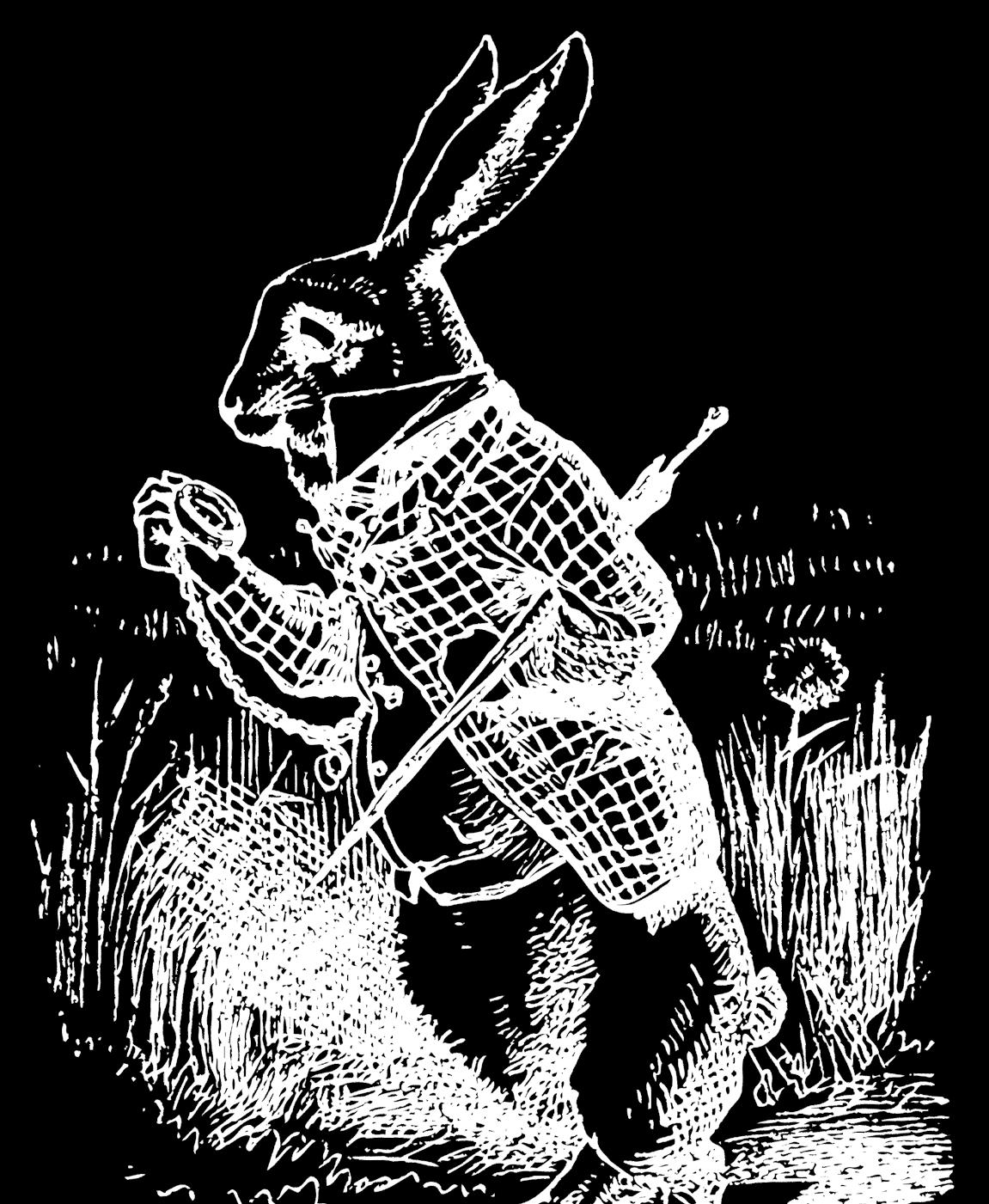
















 heads!
heads!








Modeled by Wengfay Ho ’26
Nico Giro-Martin ’27
Ella Briggs ’25
Madeline Burdge ’25
Style by
Grace Rivera ’26
Erin Chan ’26
Hannah McMinn ’26
Aggie Rigo Saitta ’25
Adia Elcock ’27
Veda Kalidindi ’26
Richa Verma ’26
Emelia Marshall ’25
Photos by
Monica Bagnoli ’25
Design by
Andrew Johnston ’25
Katie Fitzgerald ’26
Videography by
Taiga Lewis ’26
Alex Nakamitsu ’26
Special thanks to Culture Cafe
Brett Small at CI Solutions
Erin Marshall at Iroquois Group
Ellen Peltz






Inspired by the whirlwind story, Alice in Wonderland, our photoshoot envisioned a fresh take on its whimsical characters, with a twist. We retained iconic elements like the Mad Hatter’s unmistakable hat, the White Rabbit’s distinctive ears, paired with their offbeat and outdated attire, to contrast with our modern interpretation of Alice and Red Royalty’s costumes. These choices symbolize not only the characters’ distinct personalities, but the peculiar charm of the fantastical world we aimed to capture.
- Grace Rivera ’26
Produced in cooperation with The Colonial Williamsburg Foundation. COLONIAL WILLIAMSBURG is a registered trademark of The Colonial Williamsburg Foundation.





 Story by Flat Hat Magazine Staff Design by Emelia Marshall ’25
Story by Flat Hat Magazine Staff Design by Emelia Marshall ’25
In honor of our Garden Party theme, the staff compiled a list of songs they would listen to whilst “Frolicking in a Meadow.” They encourage readers to put on this playlist and feel free to frolic!
“Katie Queen of Tennessee” by The Apache Relay
This song holds a special place in my heart because my roommate introduced it to me! The seamlessly blended vocal harmonies and guitar arrangements create a sense of sun-drenched nostalgia. Every time I hear this song I immediately want to go outside! ~ Grace Rivera ’26

“The Avalanche” by Sufjan Stevens
This is THE quintessential frolic song. The soft melody and the wind instruments really tie it all together. All of Stevens’ work has a “frolic through the meadow” vibe, but “The Avalanche” really makes you feel like it’s a warm spring afternoon and you’re wandering around Colonial Williamsburg. ~
Katie Fitzgerald ’26“Paddle to the Stars” by The Dip
The lyrics profess a simple love and are backed by bluesy instrumentals, making for the perfect feel-good song to listen to while dancing through flower-filled fields. ~ Portia Dai ’26
“The Beach” by Alexandre Desplat
This song is called “The Beach,” but I think the soft whimsy can apply to a meadow just as well. “The Beach,” from the 2019 Little Women score, is written by one of my favorite composers, Alexandre Desplat. The airy and delicate sound is the perfect, playful background as you prance through a little flower field in a pretty little dress. ~ Marion Biondi ’24


“Ride” by Lana Del Rey
It’s all about feeling alive and free. ~ Adia Elcock ’27
“Somewhere Only We Know” by Keane
It’s just one of those comfort songs that my friends and I love to listen to and sing any time, anywhere. There is something magical about the song. Plus, it talks about being somewhere special. ~ Sophia Kaisermann ’27
“Wildflower & Barley” by Hozier
The song itself sounds like literal sunshine. ~ Emma Carmichael ’26
“Vampire Empire” by Big Thief


A very folksy song; the bridge really does make me feel like I’m wandering around aimlessly in a meadow. An absolutely beautiful song, and Adrianne Lenker’s voice really shines through. ~ Katie Fitzgerald ’26
“Would That I” by Hozier

The beginning especially feels like a warm spring day, with a breeze ruffling the wildflowers nearby. Even when you reach the chorus, it just makes you want to run through a field of said flowers — it was built for frolicking. ~ Emelia Marshall ’25





















































































Drugs and diets swearing to hold the elixir to everlasting health and beauty is nothing new. Every decade or so, a new weight loss fad dominates the pop culture soundwaves. From tapeworms, cotton balls, cigarettes and coffee, amphetamines, and diabetes drugs, our pursuit for the ideal body by any means necessary has deep roots. But how do these pursuits of bodily perfection compete with recent progress made by the body-positive movement? What do they say about society’s habit of mistaking bodies for fashion trends, and who (or what) is responsible for the entanglement of fashion and figure?










The easiest way to understand society’s attraction to trends and the conflation of bodies and clothing is through heuristics — mental shortcuts that allow us to make decisions more easily at the cost of nuance. As a way to relieve the burden of choice, our brains look to the standard-bearers — usually media outlets and corporations — to tell us what to buy, how to look and act, which skincare routine will keep us looking younger longer, who is “ugly,” who is “pretty,” among others. Standard-bearers manufacture societal expectations to sell the idea of increasing one’s social currency. Over the past century, these industries have promoted the notion that youth and thinness are the most valuable asset.


current fashion trends, they had to alter their bodies accordingly. Promoting the notion that a person must be thin to be fashionable soon became widely accepted and highly profitable — and where the potential for profit goes, other industries follow.


















Before the age of mass media and industrialized economies, bodily preferences and social currencies were as varied as the cultures that held them. However, the rise of capitalism and the Industrial Revolution did what it does best and ruined everything. To save on production costs, the clothing industry created standard sizes that favored thin bodies. The lack of inclusivity in sizing meant that if a person wanted to embrace the

Health-based corporations found ways to monetize women’s insecurities by peddling fad diets and weight-loss drugs that catered to whatever was popular in the trend cycle at the time. For example, to fit into the Twiggyinspired babydoll dresses of the 1960s, women would adhere to the grapefruit, cigarettes, and black coffee diet. The toned physiques that paired well with aerobics leotards of the 1980s were best achieved through the appetite suppressant drug fen-phen. To properly flaunt the whale tale and skinny jean combo of the 2000s, you need only make an appointment with CoolSculpting and subscribe to the Adkins or the Weight Watchers diet. Similarly, the fledgling years of social media saw the rise of the Kardashians and similar influencers promoting flat tummy teas and BBLs to get that perfect hourglass shape.






As the 2010s rolled through, and the noise of influencers promoting pills, powders, and potions to achieve the perfect body type rose to an all-time high, a beacon emerged to save us from the trenches: The body positivity






















regardless of shape, color, or ability. The new era of body positivity in the digital age built off the foundation activists had laid half a century prior. Plus-sized activists of color vocally resisted the standard of beauty grounded in whiteness and forced fashion and diet industries to confront their racist histories. Models and activists like Ashely Graham began appearing on the cover of Vogue, and artists like Lizzo showed audiences that you don’t have to be thin to perform like an athlete. Though the early years of social media remained a never-ending cesspool of insecurity and unattainable bodily ideals that still haunt me today, the emergence of popular influencers whose bodies defied the social norm planted a small seed of body acceptance. I naively believed this pattern would follow us into the 2020s, where health and fashion would finally be divorced from size. However, capitalism did its thing and ruined everything. Again. When advertisers and marketers realized they
As soon as the novelty of body positivity wore off, the movement’s battle cry turned into a whisper — and a new decade began.









If we’ve learned anything about the 2020s so far, it’s that the body positivity movement was not a wrench in the trend machine; it was a cog. The turn of the decade has brought with it yet another paradigm shift that prioritizes thinness over other body types. The Kardashians reversed their BBLs, lowrise jeans and Miu Miu mini skirts dominated fashion trends, and heroin chic models graced the runways once again.










The recentering of sample-sized bodies in popular culture meant that society needed a new way to assist people in their journeys back to conventional beauty standards. This leads me to society’s latest drug du jour: Ozempic. When future historians put their metaphorical pen to paper and write the story of pop culture phenomena that dominated the 2020s, there is no doubt that Ozempic will have its own chapter. According to Google analytics, searches for Ozempic have risen 436% since the start of the decade, and its presence in the pop culture lexicon is far from losing momentum.














Manufactured by the Danish pharmaceutical company Novo Nordisk, Ozempic hit the market as a diabetes treatment drug. The once-weekly injectable drug contains semaglutide, which regulates hunger cues, making users feel fuller for longer. The appetite-suppressing qualities of Ozempic resulted in reports of weight loss by users, and as soon as the weight loss bells rang, Novo Nordisk found themselves appealing to a much larger market. The increased demand for Ozempic prescriptions for











cosmetic purposes led to the manufacture of Wegovy — a drug nearly identical to Ozempic but containing a higher dose of semaglutide, leading to swifter, more dramatic weight loss results.












Acquiring a Wegovy prescription is now as easy as taking a BuzzFeed quiz. Online pharmacies dole out prescriptions like candy, and doctors don’t hesitate to classify the drug as a cure-all for every ailment experienced by a fat person. Moreover, the demographics of Wegovy and Ozempic users are getting progressively wealthier, thinner, and whiter, showcasing that our

attempts at meaningful change are destined to be short-lived.


It should be noted that the purpose of this article is not to shame anyone for wanting to lose weight or to encourage fat people to stay fat for the sake of activism. It’s your body; follow your bliss. However, it is important to understand the deep-rooted systems that profit from the “shortcomings” of medium and large bodies.



















So, how do we create a system that doesn’t view a person’s flesh as a form of social currency that can be altered as easily as a pair of jeans? The best answer I can give is body neutrality — a feat that is easier said than done, but worth the effort. The bedrock of the fashion and diet industries is predicated on using idealized body types to sell products. By de-centering mainstream beauty ideals and respecting our body’s function rather than appearance, it will be harder for these industries to capitalize on them. As a result, the media and marketers will be forced to regroup. Though this is a bright image of the future, I am hesitant that my master plan will ever come to

In the meantime, it’s helpful to keep in mind that while drugs like Ozempic and weight-loss trends can produce positive outcomes for some, our bodies will still never be good enough in the eyes of tastemakers — and that’s by design. The more unattainable the beauty standard is, the more we want to attain it; the faster the trend cycle moves, the faster we’ll want to move with it. There is nothing wrong with you; people are just greedy. The only “wrong” of your body is the way the world























We live in a world of superfans. You know them, and you love them — your Swiftie best friend, your Trekkie dad, your diehard New England Patriots fan mom, the list goes on. Defined by the Merriam-Webster dictionary as “an extremely enthusiastic or dedicated fan,” a superfan is a hardcore fan that exists in virtually every subgenre of popular culture, from music and media to sports and politics. The prevalence of and easy access to content, made possible by the growth and influence of social media, escalates the possibility for regular fans to become superfans.
Superfans aren’t a new thing by any stretch of the imagination. Rather, according to author Zoe Fraade-Blanar, whose book, Superfandom: How Our Obsessions Are Changing What We Buy and Who We Are, details the history and rise of the superfan, “Fandom is ancient — as long as there’s been culture, there’s been fandom. What’s changed over the years is the level of access.” The level of access, of course, is proximity to content via social media platforms like Instagram and TikTok, where fans can not only follow their favorite artist, athlete, show, etc. for original content, but they can also bond with fellow fans and create communities.

When I say that there are superfans among us, I am, of course, calling myself out as well. I think I’m predisposed to becoming a superfan of essentially every piece of media I love. I’m a “Doctor Who” fan who owns a sonic screwdriver and a fez, which gives you a pretty good idea of my level of insanity. I’m also a music superfan: I’ve loved the Beatles since before I can remember. Random details about who played what during recording sessions? I have a book on that, and I probably know who played guitar on that b-side you’ve never heard. I own the “Live at the Star Club” album on vinyl, I have a set of Beatles nesting dolls, and I proudly display a set Sgt. Pepper’s Lonely Hearts Club Band nutcrackers in front of my TV. I’ve made wonderful fellow superfan friends through Doctor Who and the Beatles throughout my life. We watch marathons together, listen to albums together, and geek out together (which is really the best part). Fraade-Blanar is right — superfan
obsessions do indeed change what we buy and who we are.
As a Beatles superfan, I lived for the occasional SiriusXM free trials so that I could listen to the Beatles Channel for their 24-hours, eight-days-aweek Beatles programming (how clever). I bit the bullet and paid the monthly subscription fee this past November, however, because SiriusXM tempted me with yet another way to feed my superfan tendencies, but with a different artist. They debuted a new show called “Life” on channel 14, hosted by my other significantly more controversial musical obsession: John Mayer (apologies and brace yourself, Swifties).




confirmed to be about him — would wreck his career come the release of Speak Now (Taylor’s Version) Because their comments were (and still are — check out some of Mayer’s posts from April to July) available to the public, Swift took notice and even addressed her fans during one of her live shows, telling them, “I’m not putting this album out so you can go on the internet and defend me against someone you think I wrote a song about 14 million years ago,” as reported in a July 2023 NBC News article. Only a small portion of Swifties partook in the Mayer Instagram comments bombardment of summer 2023, and I don’t hold these actions against the whole fandom. I find it fascinating to study the influence that a group of superfans can have when they decide to use their strength in numbers to represent the fan base outside of their fandom’s bubble.
In addition to serving fandoms as a medium through which superfans can connect and communicate with one another, social media also provides superfans with an easy, direct line of access to celebrities. The relationship between Swift and Mayer was born of, and continues to be fueled by, pure speculation from diehard Swifties, blown out of proportion by miscommunications and interactions within the Swiftdom on social media.
If there’s a moral to this story, it’s that superfans can be intense in really great ways, but we have to remember that our power in popular culture can be equally as influential. Some advice from one superfan to another: indulge in what your superfan heart desires, but remember the Marvel Cinematic Universe proverb, “With great power comes great responsibility.” Just be kind.


I’d like to be nostalgic for a moment, if I may, as I’m a senior, and this is the last article I’ll write for my beloved Arts + Culture section. Over the last four years, Flat Hat Magazine has been an outlet for me to geek out over everything from baroque rock to music in social movements to Fiona Apple’s Fetch the Bolt Cutters to the soundtrack of my favorite tragically-canceled NBC sitcom, “Zoey’s Extraordinary Playlist.” It gave me a place to be a superfan and write about the things I love, and I will forever be grateful for that opportunity. Keep writing about the things you love, William & Mary.
Sources:
https://www.nbcnews.com/better/money/obsessedhow-superfans-took-over-world-n735936
https://www.nbcnews.com/pop-culture/popculture-news/taylor-swift-asks-fans-not-defend-exesahead-speak-now-re-recording-rcna91029
Photos Courtesy of Paolo Villaneuva via Wikipedia Commons CC2.0 and Christian Sarkine via Thatcommonkid via Wikipedia Commons CC4.0

GASP! is looking for Flat Hat Magazine MODELS! Could it be you?




Have you ever felt the urge to impulse-buy on TikTok?
Probably; we’ve all been there.
It’s why the #TikTokMadeMeBuyIt hashtag has over 50 billion views. TikTok might be a video entertainment platform, but it is also a booming marketplace thanks to its infamous TikTok Shop. TikTok was the first non-game mobile app to hit the $10 billion mark in consumer spending and amassed $6 billion in customer spending in 2023 alone. Javier Irigoyen, TikTok’s former Head of Product for TikTok Shopping, described it as “an end-to-end shopping experience,” as users can buy products directly on the app rather than through a third-party online store. Plus, it only takes 10% commission from its sellers, making TikTok Shop an ideal platform for creators looking for a side hustle.
TikTok’s “Everything App” strategy offers the chance to profit off of content creation through influencer marketing. As a result, TikTok has become the prime example of “social commerce,” influencing social media apps like YouTube Shorts and Instagram, with Instagram containing over 100,000 posts and reels with the hashtags #TikTokMadeMeBuyIt or #TikTokMadeMeDoIt.
As you scroll through TikTok, it is impossible not to notice the affiliate marketing ads with the rise
of user-generated content, particularly among Gen Z creators. This form of content involves buying and personally promoting a product in exchange for followers. TikTok Shop has only two requirements for users to become commission-eligible: you must be over 18, and have at least 5,000 followers. Despite the entrepreneurial benefits of TikTok Shop, the products sold are often cheap and nonessential, made by companies such as Shein or Amazon. Shein operates on a “real-time fashion” model, wherein they closely analyze trend data to design an enormous amount of new products, creating an addictive spending cycle for consumers. This encourages overconsumption which creates environmental waste and damage. On average, Shein produces 100,000 items and releases as many as 2,000 new pieces per day. From shipping alone, the company racks up 6.3 million tons of carbon emissions, and yet TikTok users continue to incentivize purchasing its items as a way to get great deals and capitalize on the compulsive purchasing tendencies primarily exhibited by millennials and Gen Z.
Think of the Stanley Cup. A TikTok video helped spur its popularity in November 2023 after the Stanley survived a car fire. The same situation has taken place for The Little Green Machine, a portable carpet cleaner which seen doubled sales in the last 18 months following the rise of #CleanTok and “Sunday resets.”
Many of the viral videos follow the marketing convention of “before and after,” a technique known as “demo-tainment,” or the demonstration of things in an entertaining way.
However, not all sponsored content is easy to recognize on TikTok. This is thanks to TikTok’s unique algorithm: every time TikTok users open a new “For You” page session, different personalized content will be displayed based on past “likes” and search histories. This tactic, known as “neuromarketing,” makes 45% of users more inclined to make impulse purchases. The technique is used to make purchasing more inconspicuous by tailoring content to users’ preferences. On top of this phenomenon, creators recommend products in a unique way by talking directly into the camera while unboxing products. This creates intimacy, making them seem like regular people who genuinely recommend a product. These real-life testimonials are enough to make anyone cave in. A study carried out by Abhisek Kunar, a marketing lecturer at the University of Essex, showed that Gen Z TikTok users typically ignore influencer campaigns they believed to be controlled by companies. Consumer trust is the biggest barrier to social e-commerce, but TikTok thrives in this area since ads blend into the format of the platform.
Targeted marketing and micro-trends have become the way to encourage overconsumption on TikTok, in addition to the speed and ease of purchasing items. TikTok implicitly tells users that in order to fit in with their desired aesthetic, some of the most popular being “cottage-core,” “vanilla girl,” and “clean girl”, users need to buy the latest viral product. TikTok forces its young users
— particularly women and girls — to strive for a new aesthetic, regardless of how much it might break the bank.
However, users are finally waking up to the environmental impacts of the mass consumption TikTok is generating. As a digital marketplace, TikTok is even more prone to exacerbating landfills due to its excessive product hauls, item shipping, and plastic packaging. These environmental concerns have led to the rise of “de-influencing,” a trend started by TikTok users to raise awareness of overconsumption and impulsive spending. The hashtags #deinfluencing and #antihaul have racked up more than 150 million views.
The designed authenticity from de-influencing creators has turned into a way to recommend users alternative products. It has become another example of disguised consumerism by TikTok. For example, TikTok creator @alyssastephanie has some of the products mentioned in her de-influencing videos listed on her Amazon Storefront, where she earns commission from purchases made using affiliate links. De-influencing has turned into yet another way for users to influence spending.
According to Heal The Planet, the average American consumes 9.5 hectares of energy to maintain their lifestyle, compared to 2.7 hectares globally, and TikTok is only aggravating these figures. So, next time you buy something on TikTok, consider if it’s a necessary purchase or if you’re just buying into the next trend which will soon go out of fashion. You’ll be helping the environment and your bank account — and as students, we could all benefit from saving a few dollars!



The new generation of tween girls is obsessed with beauty trends. Is this a harmless new reality, or is it a sign of larger, problematic ideas in our society?
That is not what I looked like in middle school. Lots of comments agree with me.
I see these girls on TikTok with matching Lululemon sets, glossy, straightened hair, and impressively well-done makeup. Am I jealous of these middle schoolers? My instinct is to say no, but when I compare them to my middle school self with her frizzy hair, Kohl’s T-shirt, and baby face, it’s hard not to feel a twinge of envy. They seem so cool and put together, and they know it. The Sephora tweens have taken over social media, and lots of people have lots to say about it.
What is a Sephora tween? The term is so young that it is yet to have a
concrete definition, but it generally describes girls ages 9-12 who are obsessed with Sephora. But after closer inspection, this label carries much more weight than just a passion for the makeup superstore. They love specific products, like the Sol de Janeiro perfume or the Drunk Elephant bronzing drops, both of which are known for their bright and colorful packaging. They probably know more about skincare than I do, and they love their Lululemon clothes and Stanley cups. Essentially, they are girls who are much more aware of trends, especially in the beauty community, than girls of that age have been in the past. They have the same hobbies and interests that I began to develop in high school.
The first time I saw this term used with a negative connotation, I rolled my eyes a bit and assumed the internet had come up with yet another way to make fun of girls for having hobbies and interests. This may be partially true, but the more videos I saw about Sephora tweens, the more I realized it is an issue for these girls themselves. They feel like they have to grow up faster, developing more mature interests at increasingly younger ages. Girls as young as 10 are focusing on these beauty trends, and there’s no way that it isn’t damaging their self-image. They start anti-aging routines and acne
prevention treatments before even hitting puberty. The Sephora tween trend exemplifies society’s pressure on women to keep looking like they did in their 20s, placing most of their value on their looks. The audience for this pressure is just expanding to a younger audience, and to no one’s surprise, it’s mostly because of the internet.
The Sephora tween idea developed primarily on TikTok, an app infamous for the disastrous effects it has had on many users’ self-confidence and mental health. It’s full of people showing off, intentionally or otherwise, and almost seems built for users to compare their lives to those they see online. For a younger and more impressionable audience, like the Sephora tweens, these comparisons and ideas of what is best are taken straight to heart. Unfortunately, because of the mass production of content on TikTok,
girls are overloaded with images of what is “good” or “popular,” especially in regard to physical appearances, it can seriously alter their perception of themselves and what is “normal” for them to look like. That is one of the most concerning parts: Although it seems unnatural to older audiences like me reflecting on their tween years, many Sephora tweens say that they view this more mature look as the new normal.
Additionally, making these videos is becoming commonplace for these tweens. And while it may be a fun hobby, certain safety concerns arise from this content creation. Lots of girls post these TikToks with public accounts, meaning anyone on the internet can find them. At such a young age, it’s hard to have a comprehensive understanding of internet safety, and when parents don’t fully understand TikTok, the problem only becomes worse. On these videos, often “Get ready with me” vlogs and shopping hauls, the comments can



seemingly kind intentions, but while scrolling through comments, I can’t help but notice they are all appearance-centered compliments, whether it’s a simple “you’re so pretty!” or “I love your hair.”
These girls are being trained at a worryingly young age to seek and appreciate external validation, especially about the way they look.
Peer pressure has always been an issue for tweens and teens, but the Sephora tween trend places pressure on increasingly more expensive, mature, and material items. When I was a tween, peer pressure felt more focused on how you acted and who you were friends with. Now, it’s about what clothes you wear, what beauty products you have, and how in tune with TikTok trends you are. Are “Sephora tweens” simply the way tweens behave in this technologically advanced world? Or is there simply societal pressure for girls to grow up faster? Many older teenage and young adult girls have expressed feeling sorry for these tweens, wishing they could experience their childhood and middle school years the way girls did a couple of years ago — before the popularization of TikTok and social media usage at so young an age. Having time to develop your identity and be a little bit weird is an important part of growing up. Everyone has an awkward phase as a tween or teenager, and there’s something tragic in this new generation of girls not feeling welcome to go through these phases.
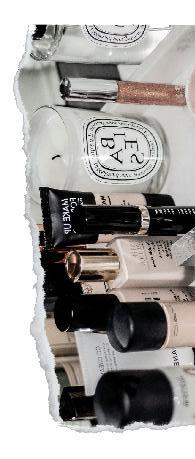

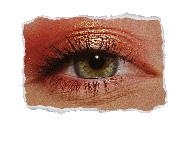
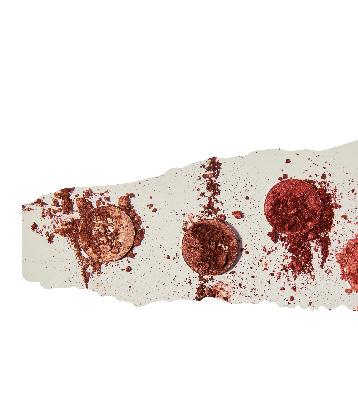




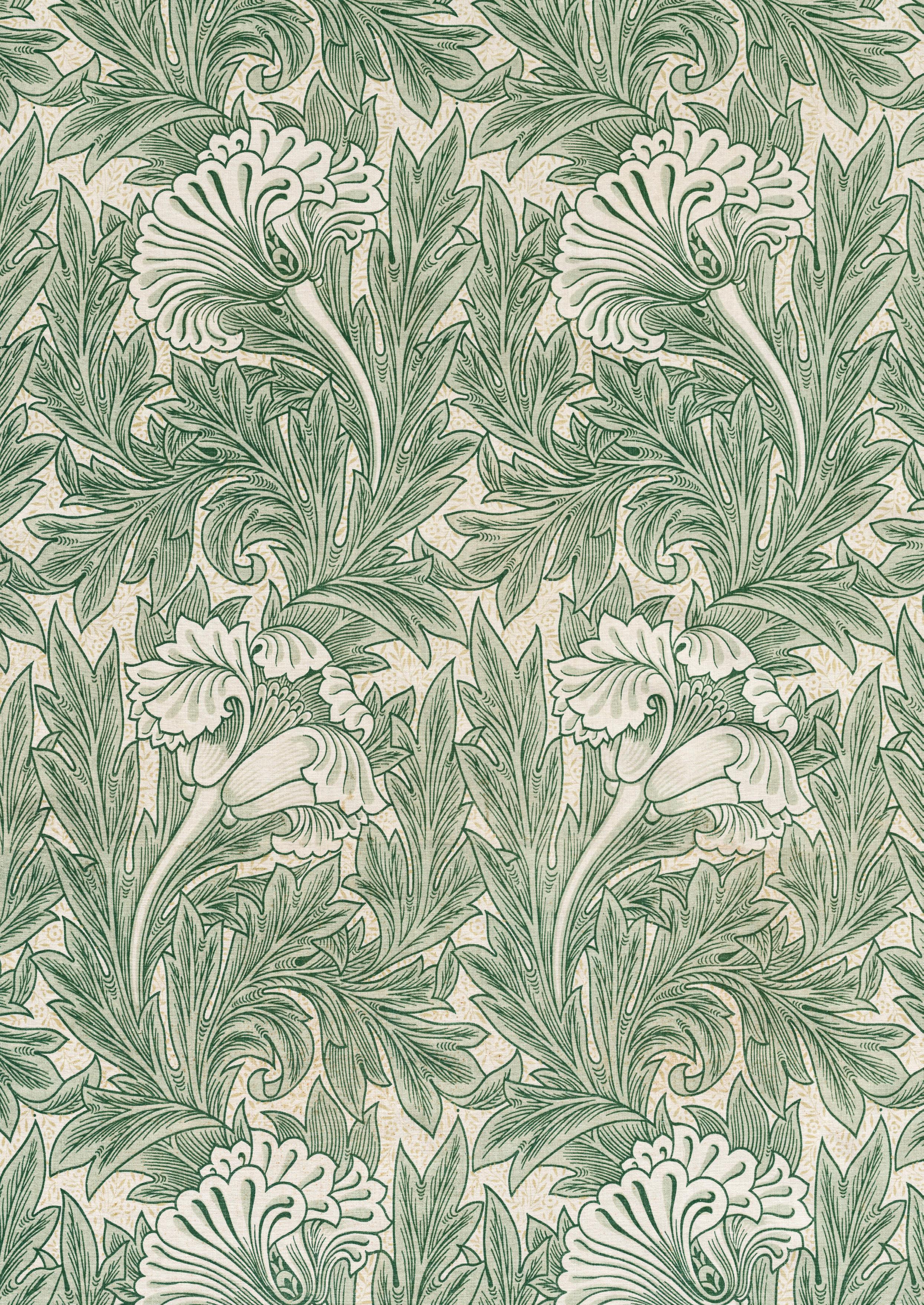










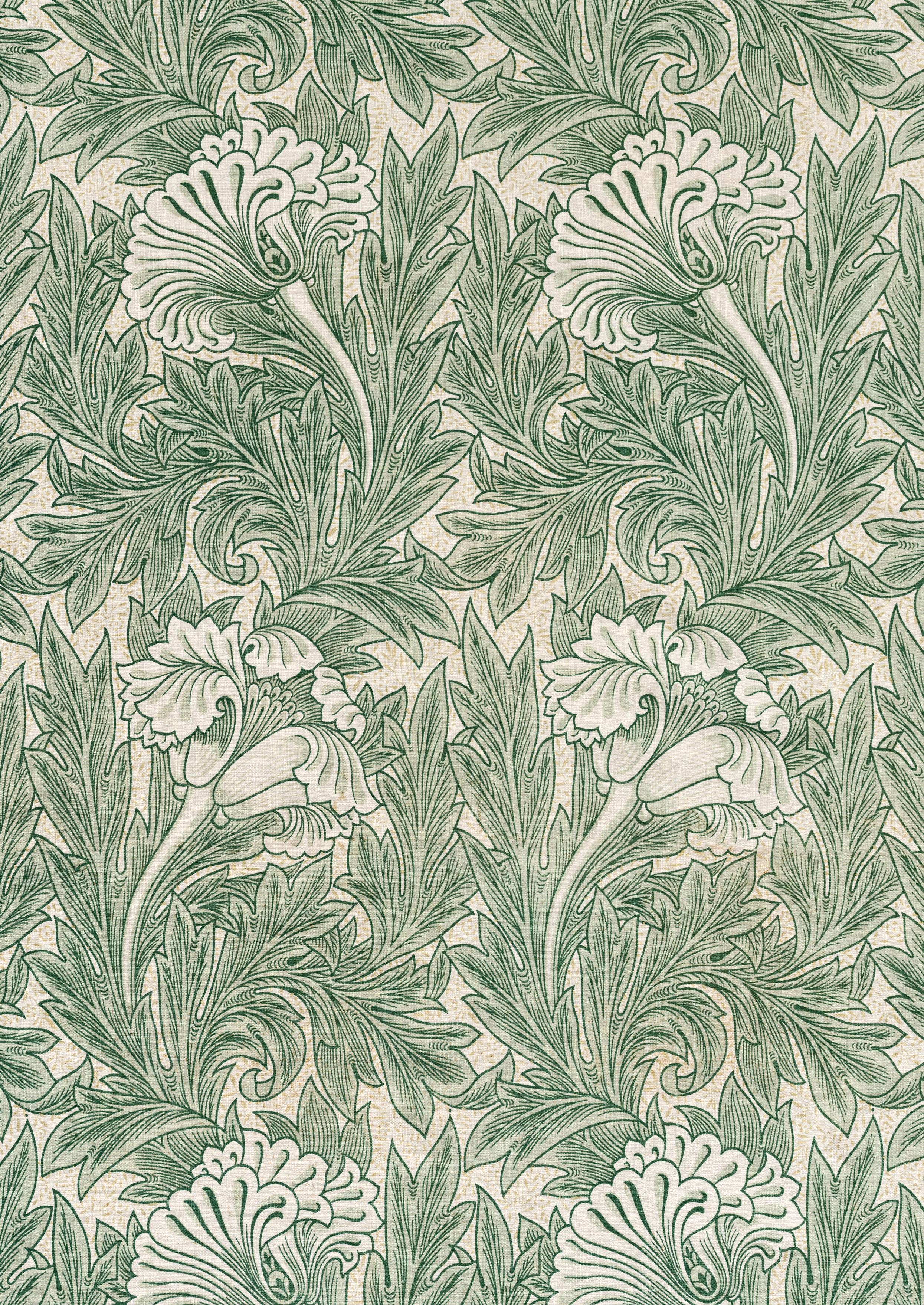
Stepping into the enchanting world of Jane Austen’s works and their adaptations, we found ourselves captivated by the atmosphere of the delightful film Emma and its playful depiction of Regency England fashion. To capture this charm, we aimed to incorporate classic period pieces, from the romantic suit reminiscent of the distinguished Regency gentlemen to elegant gowns fitting for Austen’s heroines, striving to pay tribute to Jane Austen’s beloved narratives and recreate the allure of the Regency era.
– Grace Rivera ‘26Modeled by
Aggie Rigo Saitta ‘25
Alex Kingston ‘25
Eloise Griffin ‘25
Jasmine Dickerson ‘25
Produced by Grace Rivera ‘26
Veda Kalidini ‘26
Richa Verma ‘26
Adia Elcock ‘27
Aggie Rigo Saitta ‘25
Elissa Steil ‘26
Photos by Ryan Goodman ‘25
Videography by Taiga Lewis ‘26
Alex Nakamitsu ‘26
Design by
Katie Fitzgerald ‘26
Marion Biondi ‘24







“If I could but know his heart, everything would become easy.”
Jane Austen, Sense and Sensibility


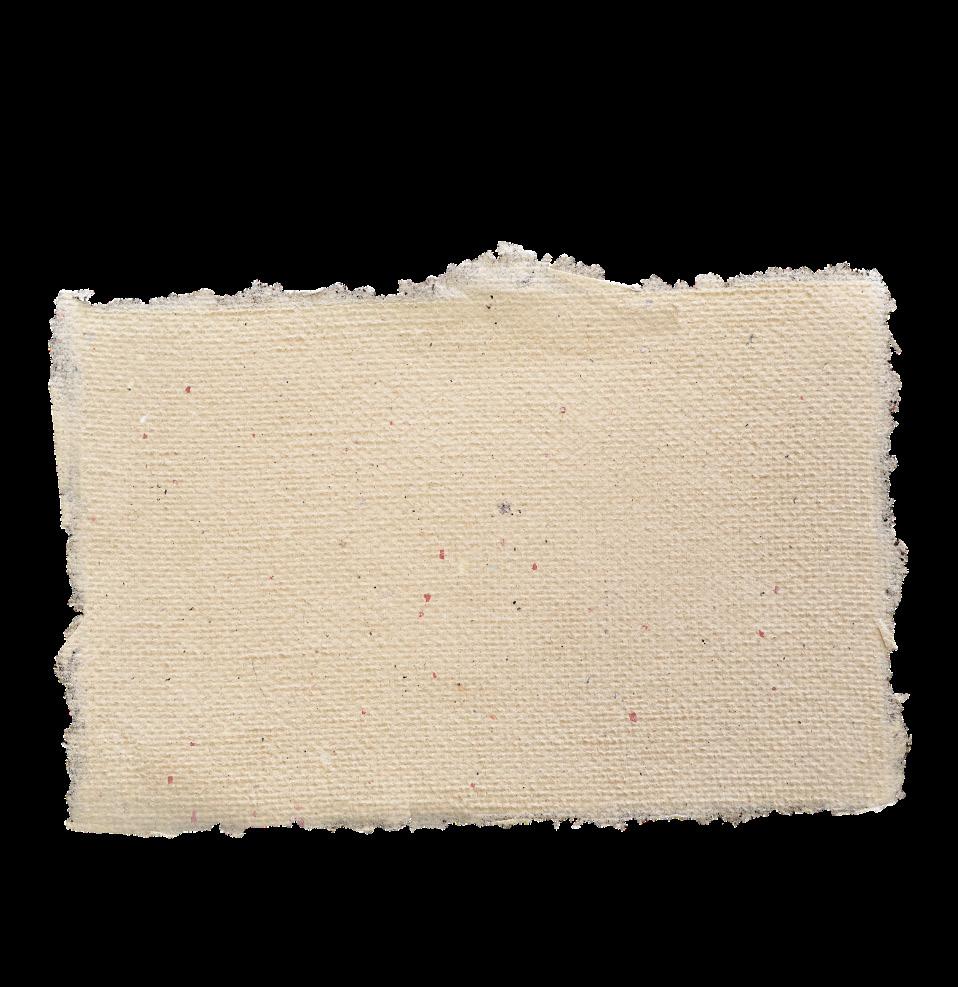


In Gen-Z fashion, the ’90s are coming back, but lately, it’s digital cameras instead of scrunchies and neon latex. Many college students’ first memory of a digital camera is a family member fumbling with the buttons of a point-and-shoot camera, probably at a sporting event or dance recital. However, with the rapid improvement of smartphone cameras and their widespread usage, digital cameras faded out of mainstream culture for several decades. That was until the summer of 2023, when digital cameras skyrocketed to relevance in the span of just a few weeks.
Suddenly, every listing for a used digital camera doubled in price, with many used cameras retailing for between $100 to $200. Its rapid rise to fame is in conjunction with several forces: nostalgia, social media marketing, and peer influence. The most common explanation for the digital
camera revival is nostalgia. Movies, music, and fashion are all industries that draw inspiration from the ’90s. The 2020s have been filled to the brim with ’90s inspired media. For one, the bright neon lights and backdrop of Leitch’s Bullet Train pay homage to the aesthetic of ’90s action movies, and just one year before, Netflix released the Fear Street Trilogy, which drew heavily from ’90s slasher excellence. With the increasing presence of nostalgia on the big screen, the revival of the technology and trends of the decade seemed almost inevitable. From vinyl and Polaroids to CDs, digital cameras were destined to come back into popular culture; however, this resurgence goes deeper than a typical trend cycle.
Social media’s role in perpetuating trends is a major force in determining how consumers allocate their disposable income. For one, TikTok had several trends that led to a renaissance in young adults’ usage of digital cameras. One specific TikTok trend that launched the camera into the mainstream was one where the user would say, “I bought a digital camera for the summer, and here’s how it went,” followed

by tens, if not hundreds, of snapshots into the user’s life. These photos were aesthetic, with many of them shot at beaches, parties, and vacations, picturing people hugging and smiling. The trend created an idealized version of the user’s life, displaying the highlights of their summer as the season wraps up. The trend itself was an ad at its core, as it created an idealized vision and credited it to a product — the digital camera. These compilations took over quickly, with many users running to sites like eBay or Amazon. The main draw to the digital camera is not the camera itself but the flourishing social life that can be captured with it.
Seemingly overnight, it was not just people on social media with digital cameras; friends would bring these cameras everywhere. It would start with a friend taking a photo of you at a gathering, and maybe you would never see it again, quickly forgetting a snapshot of your life which is now immortalized. But then, the dissemination of the photos became systematic. After going out to an event, you would wake up the next day with ten different links to a Google Drive, and you would search through hundreds of photos, landing on maybe two or three good photos of you and your friends. After weeks, maybe months of this, you would start to feel inspired, maybe even pressured, to buy one of your own. The biggest difference that digital cameras have from other nostalgic technologies is the peer marketing on Instagram.
It started very slowly; old finsta — fake Instagram — accounts would post photo dumps, including a few digital camera photos. But surely, owners of digital cameras realized the quickest way to spread the photos they took was social media itself. Some created Instagram accounts only intended to post the photos they took while at social gatherings. The accounts would then be promoted by those in the photos, often reposting or tagging the accounts on their own accounts. Quickly, it seemed like you couldn’t open social media without seeing a photo from a digital camera. The constant sharing of content served as free marketing for digital camera companies, as other people wanted to emulate a similar
online presence as their peers. The following on these accounts are cult-like, as it is an Instagram account almost entirely dedicated to other people. The face behind the camera is often not in any of the photos; if they are, they are in a large group. Some followers may be close friends with the account owner, but others may have no connection to them at all.
The unfiltered and undeniably public nature of these accounts begs the question of privacy. The “finsta” itself has been an ongoing phenomenon, with many young people evading the prying eyes of parents or fearing that jobs and universities will find their accounts. However, to quicken the spread of the photos, the accounts are public and often not run by the people in the photos, consequently giving an extremely raw and unfiltered look into young adult life. The very nature of the digital camera is to illuminate what was previously in the dark: whether at parties, bars, or concerts, behavior that a cloak of darkness previously hid can now be revealed with a single click. Even when scrolling down the rabbit hole of these accounts, it’s possible to make assumptions about the relationships between people in the photos. If someone who was once a regular suddenly disappears, or perhaps two people have been repeatedly photographed together, you can understand the underlying dynamics between people you have never even met.
Young people are addicted to revealing parts of themselves, and this digital photography trend perfectly aligns with that notion. From the beginning, the fascination with the digital camera was never really about the camera or the photos. It was about projecting something casual, idyllic, and, overall, something raw. It brings what was once dark to light, subsequently encouraging young people to abandon fears regarding their digital footprint. Though many people chalk up the resurgence of the digital camera to another victim of nostalgia, its longevity in mainstream media suggests that this trend works in tandem with peer marketing and pressure. Next time you find yourself out and about with a camera pointed at you, make sure to smile — you never know who will end up seeing it.
This College of William and Mary alum shook up the standup comedy world and earned a certain reputation along the way for her no-holds-barred approach.
You may know her from controversial TikToks (or Instagram Reels, for the more pretentious crowd) on Netflix’s social media, or you might have seen her as the small video overlaid a simultaneous game of Subway Surfers during late-night scrolling. Michelle Wolf, Class of 2007, made a name for herself as a stand-up comic challenging the status quo for female comedians, opting to zero in on the raunchiest material she can muster. From male genitalia at nude beaches to criticizing the Me Too movement, she is known to elicit one of two reactions from her audience: a cackle or a groan. One such joke, centered around whether she was in the wrong for publicly acknowledging her friend’s breast augmentation as “fake boobs,” finished with the punchline, “Okay, good, so we’re all a little transphobic.” Reactions from the audience were understandably mixed.
After pouring over her most recent release on Netflix, It’s Great to Be Here, and revisiting her older work, Wolf clearly does not attempt to be someone that she isn’t, nor does she make any claims of enlightenment or political correctness. Her cheeky honesty, replete with perfectly timed pauses and mischievous grins, exposes viewers to her inner monologue, which, judging by her
high numbers on Rotten Tomatoes, viewers often find abundantly relatable. For as many laughs as she may garner, Wolf’s sets also spark dialogue on whether the various movements of our time have gone too far. In an article from Rolling Stone entitled “Why Michelle Wolf Escaped America,” she discussed frustration at Americans’ inability to contextualize comedy from people like Dave Chappelle, whose joke involving Caitlyn Jenner provoked criticism from more liberal viewers. “I think people really miss a lot of what he’s saying,” Wolf admitted.
Comedians in recent years have been forced to address attempts at “canceling” them, and Wolf is no stranger to these attempts. Specifically, poor public reception to her performance at the 2018 White House Correspondents Dinner put her career in a precarious position. In their coverage of the dinner, Vogue described it as a “take-noprisoners routine” in their article “Was Michelle Wolf Out of Line?” According to The Guardian, Sean Spicer labeled Wolf’s set as “disgusting.” Despite the backlash, six years later, she continues to find success in spades.
Picture credits

Comedy is arguably more a practice than an art. Unlike dance or opera, there is no mastery in comedy; rather, like yoga, practitioners must regularly reevaluate their limits while they push boundaries. Michelle Wolf’s unabashed willingness — eagerness, even — to push those boundaries leads her to perform material that many comedians consider far beyond their limits. Yet, she seems to get away with it, narrowly escaping cancel culture with her signature sly grin.
How does she do it? Maybe the trick is in her delivery, which has an unmistakable yet indiscernible childlike quality to it. Like a teenager sitting at the adult table for the first time, Wolf throws out a comment that seems far too inappropriate, far too mature for her elementary school peers at the kiddie table. Then, she waits. A single snicker from a greatuncle gives her the signal she needed to barrel full speed ahead, earning glares from her parents for her use of profanity and R-rated material. This common coming-of-age experience easily describes the relationship which Wolf cultivates with her audience: they are the aunts and uncles, encouraging her to keep them laughing and ignore the stares from her parents. That feeling of being “in” on something special keeps her fans coming back and the political correctness police at bay. How can you punish a young mind testing the waters? You have to let her get some sea legs first.
For those who don’t quite buy that reasoning, another explanation is her perplexing stance on feminism. The audience finds themselves caught in a constant “will she, won’t she” with every reference to the female struggle. One moment, she discusses the perils of a society that revolves around external beauty, announcing her wish for “true equality.” The next, she seems to blame women for a lack of clarity and direction in the Me Too movement. On its face, she seems to be attacking strong women who spoke their truth, despite all the forces against them. Yet, when examining the movement and its repercussions holistically, Wolf may not be too far off. “This was a lot more complicated of a situation than we let it be,” she said. “We needed to have conversations around it, and we couldn’t even have conversations.” The remainder of the set

discusses women setting boundaries with male peers but failing to communicate them, the gray area of uncomfortable sexual encounters, and the unfortunate female attraction to “bad boys”.
You can’t tell whose side she’s on, but her ambiguity seems to be working. She captures audience members who think that “woke” feminism has gone too far while simultaneously appeasing the crowd that desires the “true equality” Wolf describes. The enemy of your enemy is your friend, and since no one can tell which category Wolf fits into, she escapes without a scratch.
From her work on stage to intimate interviews, Michelle Wolf exemplifies that notorious William and Mary wit, and she uses it skillfully. She tiptoes her way through sets and conversations, never definitively declaring a stance but leaving her audience mulling over the movements of the postmodern age. Wolf tends to voice what many might deem “inside thoughts.” Some viewers might prefer she keep those thoughts inside, but others may relish the feeling of taking part in such a seemingly intimate exchange. If you consider yourself the latter, Wolf’s work might just be for you.

 Story by Elizabeth Brady ’25
Design by Katie Fitzgerald ’26
Story by Elizabeth Brady ’25
Design by Katie Fitzgerald ’26


It has been widely discussed recently that, due to the prevalence of streaming as the primary means of music consumption, the album’s use as an artistic form has taken a significant hit. In the age of streaming and social media, artists need to make quick impressions that fall between the two and three and a half minute mark.
Think about it: when you listen to music, you’re likely listening to a playlist that you’ve curated for yourself or to songs as lone entities. This has not been the case for most of music history. Until the invention of musical pirating software like Nabster or purchasing and downloading software like Apple Music, it took more than a click to listen to a song on its own. If someone before recorded music wanted to listen to Mozart’s “Allegro in D minor” when it first came out, they either had to attend an entire live performance or buy the sheet music and dedicate the time to learning it themselves. If a Beach Boys fan wanted to listen to “I Get Around,” they had to either buy the whole All Summer Long album, or get the 45 record of the individual song, which was significantly more expensive. The purchasing and listening format of this music significantly impacted how listeners consumed it, and, subsequently, the way artists created it.
Because of the age of streaming, the album is becoming a lost art. More and more, albums don’t function as albums but as playlists that artists create from their own music. True albums are cohesive and tell a story; they are layered and complex, holistic and multifaceted. As streaming and social media marketing becomes more and more ubiquitous, the album presents a dying breed within the realm of music production. It seems that albums like Rumors and Aeroplane Over the Sea are products of a bygone era, where music demanded more than three minutes of a listener’s attention. So, to remedy this, I’d like to humbly present five albums from the last six years that I think make the case for spending hours with your headphones in.



Famously dishonest but painfully vulnerable, SZA has taken the digital age of music and made it her playground. SOS is so special because of the intense labor and artistic process it betrays; we can almost see SZA in all of her rare forms in one place. The album explores new places in her sound while still maintaining what everyone already loves about her. The popularity of this album and the standout songs from it doesn’t at all disqualify it from being a strong work in its entirety. What makes this an album is how you feel exactly where she is by the end: it paints a totalistic picture of the inside of her mind.
Father John Misty has successful and cohesive albums under his belt, but Chloe and the Next 20th Century shows the scuffs and bruises of his long creative career. Equally reverent and flippant, there seems to be what can only be described as fondness that runs through every track. This album is deeply emotional but somehow still remains light; it feels jaunty and lived-in, a must-listen from beginning to end.



Blood Orange is an experimentalist at heart. His earlier album Champagne Coast reveals a new degree of a willingness to expand his sound, and Negro Swan functions as a meaningful continuation of this journey. Sometimes slow, sometimes lyrical, but still dancy, this album is a true album because it never drags and clearly marks a new step from a talented artist. The core themes of self-acceptance made obvious in the vocal ad-libs and lyrical content give the album a distinct feeling. His message is not belabored, but freeing. Blood Orange takes your hand, and takes you with him.

Taylor Swift’s “era-ification” of her career should not be confused with genuine cohesiveness in each of her albums. Folklore's thematic and narrative throughlines differentiate it from anything else in her discography. Folklore has a desperate, keening desire for gentleness and acceptance, pulling its many stories up around the album's bleeding heart. Unlike much of her other work, it does not have as many overt references to her personal life, opting to convey her reality through borrowed stories. Although it is the least biographical of all her albums, it is surely her most honest.

THE SWIRLY COUCH! Where are you supposed to sit? I’ve heard the argument that it’s supposed to be an art piece, but that doesn’t hold water because it’s SOOO ugly.
- Andrew Johnston ’25When people fill up their enormous water bottles at the soda stations. Guys, there’s literally a machine just for water in Sadler and Caf!
- Katie Fitzgerald ’26The lack of a functioning water drainage system around the new Music Building and Phi Beta Kappa Memorial Hall. Why does a giant puddle always form across the path in between the two buildings whenever it rains?
- Mary Beth Bauermann ’24One small thing (well I guess it’s not so small) I hate about campus is Earl Gregg Swem Library. I’ll admit that growing up in England amidst 16thcentury built libraries set the standard quite high for me, but the hospital-like white walls and confusing room numbers just don’t do it for me!
- Aggie Riggo Saitta ’25I can’t stand the inconsistency of bike paths — one minute, they’re there, and the next, they’re gone! Where are bikes supposed to go?
- Emelia Marshall ’25Always seeing at least one familiar face every time I’m on campus.
- Mary Rice ’25





Some things I love about the College are the little lambs at the Governor’s Palace, the beautiful warm weather, and the music and lights that surround Colonial Williamsburg.
-
RichaVerma ’26
I love how walkable it is. You can get pretty much anywhere in 10 to 15 minutes.
- Andrew Johnston ’25The patio behind Daily Grind. It’s a great place to get some alone time and call family.
- Katie Fitzgerald ’26I love the little study stations all around Sadler. The chairs are surprisingly comfortable!
- Adia Elcock ’27I love the green spaces on campus, especially the partially hidden ones where you can get a bit of peaceful reading or email writing done. My favorites are the swing in the meadow behind Sunken Garden, and the small passage between Blow Hall and Chancellors Hall.

- Aggie Riggo Saitta ’25
The small path branching from the Grim Dell that connects to the stairs leading to the Landrum-Chandler-Barrett-Jefferson path. Although it doesn’t make sense as there is another path a mere couple of feet away, it’s the campus’ most serene trail, especially in the fall.
- Grace Rivera ’26
Always seeing at least one familiar face every time I’m on campus.
- Mary Rice ’25
Desire paths. Shortcuts. Environmental catastrophes. However you choose to see them, the College of William and Mary’s campus is littered with them and possibly even haunted by them. Many of these unofficial paths line campus, worn down from students repeatedly trying to get from point A to point B a bit quicker. Desire paths often ignore infrastructure like sidewalks or stairs that are in place, and can wear away natural vegetation. Some of these paths are steep, narrow, or so wide that they are indistinguishable as paths, but most seem to save precious time during a busy student’s day.
Here, I evaluate and document several desire paths on campus. In doing so, I am adding to the existing compendium of the College’s desire path knowledge, first formally collected by Evelyn Hall ’25 in 2022. Since her report, paths have been created, forged, paved, and some remain lost to time. These are their stories.
“Is this even a desire path?”
Some desire paths are less obvious than others — if I hadn’t used these myself or read about them in Hall’s work, they would be unknown to me. Some of these may not constitute true desire paths either, but they seem too important to gloss over.
A tiny break in the bushes near Zable Stadium would remain unbeknownst to me had I not sought out the fastest way to get from the Bryan Complex to Commons Dining Hall. The path itself is probably two feet long at most, but saves its user from having to walk all the way around the corner of the sidewalk in front of the griffin statue.
Time saved: 2/5 - It’s not much of an inconvenience to keep walking on the sidewalk instead of cutting through the bushes.
Accessibility: 1/5 - Assuming this is even a desire path, you really have to wedge through the bushes and risk getting caught or brushed by one.
Flood resistant: 5/5 - It’s mulchy, so there’s low risk of a soupy path.
Aesthetic: 2/5 - The path is ugly and almost too short to rate. Also, the bushes look kind of menacing.
Overall: 2.5/5
The wooded strip from Sadler Center to Bryan in between the Sadler visitor parking lot and the Zable parking lot.
Time saved: 2/5 - I’ve taken the stairs up to the Zable to get to Sadler faster than slow walkers using this desire path, proving it doesn’t really save that much time. It’s only efficient if you’re a fast walker.
Accessibility: 4/5 - Some trees are closer together and you have to watch for roots, but the path is mostly pretty wide and flat.
Flood resistant: 3/5 - Mostly reliable but massive puddles will form closest to Bryan that you have to scramble around.
Aesthetic: 5/5 - It’s beautifully wooded, and if you just focus on the ground you can pretend you’re on a small hike. The trees and colors are gorgeous during all seasons.
Overall: 3.5/5


The patch of grass by the picnic table to get from Chandler Hall to the Sunken Garden path. There’s not a defined path, but Hall and I have both seen students forego the brick walkway to take the shortcut.
Time saved: 3/5 - It’s an attractive option for those in need of six more seconds.
Accessibility: 5/5 - It is a gentle hill with lots of open space.
Flood resistant: 2/5 - The path is marshy at best, but can be a squishy walk after a rainstorm.
Aesthetic: 2.5/5 - Not a defined path, but that’s not necessarily a detractor. Pine needles on the ground give it an outdoorsy feel.
Overall: 3.1/5
The tiny path around the back of Tucker Hall that leads from the door to the brick path next to the road. Despite its various drawbacks, I can’t stop using it — it’s like an addiction.
Time saved: 1/5 - You’ll save maybe a second of time.
Accessibility: 5/5 - No obstacles or elevation.
Flood resistant: 0/5 - It completely floods whenever it rains a little bit, and remains totally unusable because of the large puddles that form.
Aesthetic: 0/5 - It’s not pretty and looks even worse next to the brick path less than five feet away.
Overall: 1.5/5
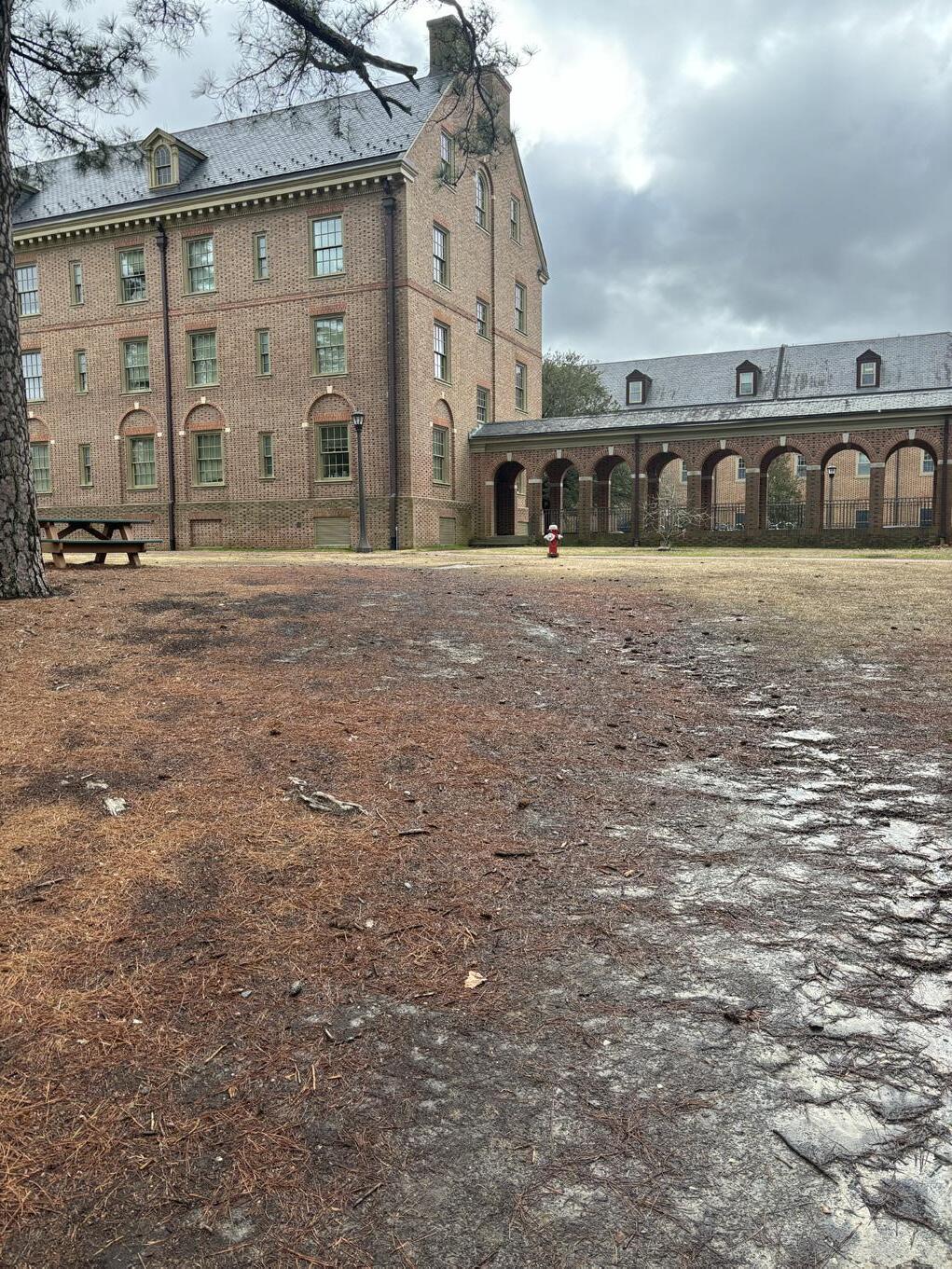

The path that snakes along the benches by the chalkboard circle outside of the ISC.
Time saved: 1.5/5 - You could possibly save a fraction of a second by taking this path instead of staying on the brick or walking through the chalkboard circle.
Accessibility: 4/5 - It’s pretty flat but you have to brush up next to the benches, which is a social nightmare if people are sitting down.
Flood resistant: 3/5 - Incredibly mid at best.
Aesthetic: 2.5/5 - My notes say “it’s aight.”
Overall: 2.75/5
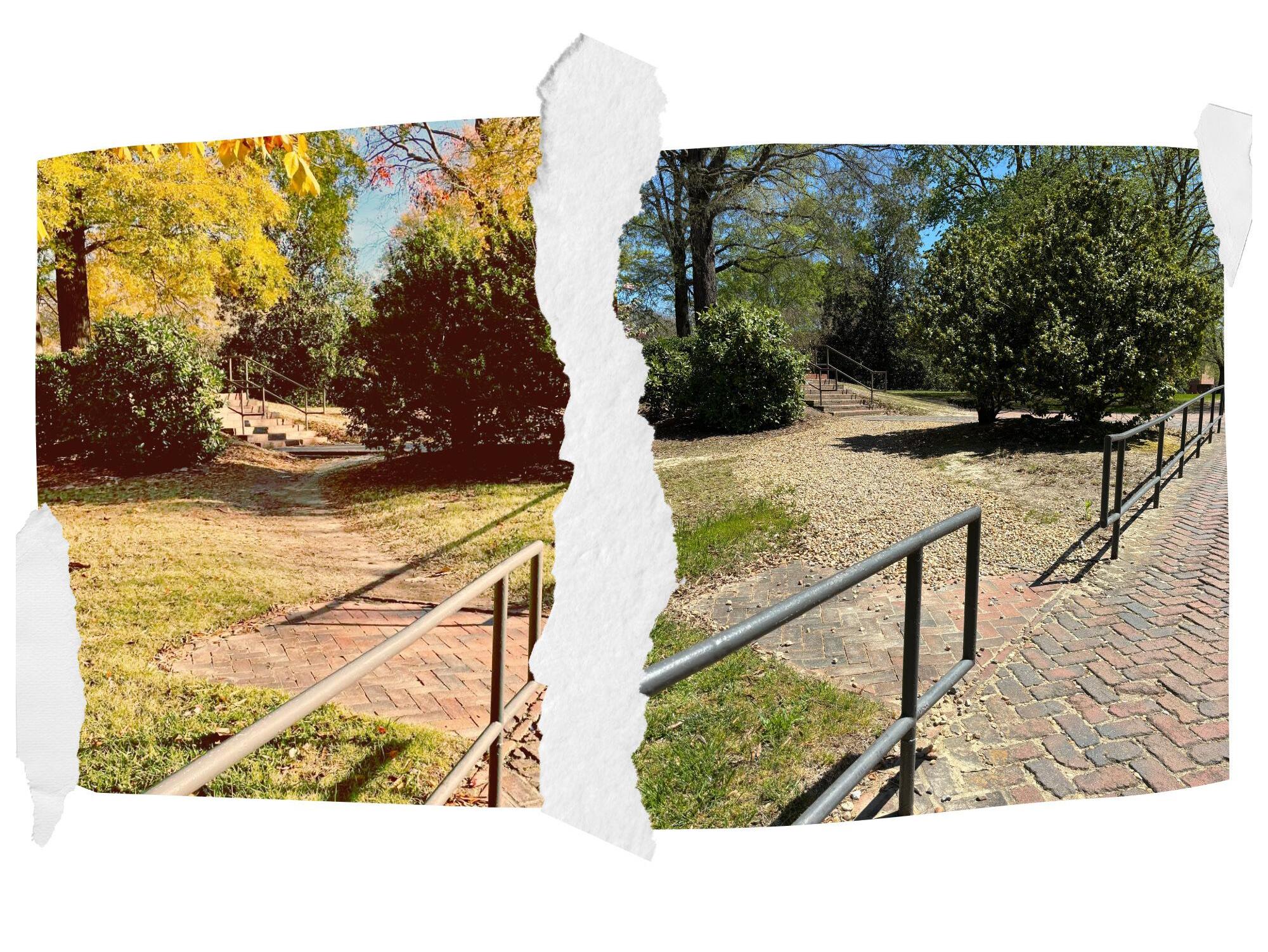

Since 2022, the desire path that used to cut a diagonal between two paths to Earl Gregg Swem Library has been filled in with gravel, making it official.


Without further ado, with a whopping 18 points, the best desire path on campus is the small cut from the McLeod Tyler Wellness Center down to Campus Drive. It’s relevant to mention that a post on Yik Yak featuring this path received 413 upvotes as of March 12, 2024, indicating that many students echo this praise.
Time saved: 5/5 - This may be the only campus desire path to save literal minutes of a student’s time. It shaves minutes off the commute from the Wellness Center to the Crim Dell, or even from Sadler if you go to the back of the Wellness Center and then down the path.
Accessibility: 4/5 - The path is a bit steep, but there are no major obstacles.
Flood resistant: 4/5 - After a storm, the path is not even swampy — just a bit soft.
Aesthetic: 5/5 - The path is a gorgeous interlude under the trees that places you either at the Zen Garden next to the Wellness Center or mere feet away from the Crim Dell.
Overall: 4.5/5 - This path is a staple of the College, and perhaps even the greater Williamsburg community. It truly gives me pleasure that this desire path’s existence will be recorded and preserved in physical media for generations to come.


The hill from McGlothlin Street Hall that leads down to the Sunken Garden is a fan favorite, but the statistics don’t entirely line up. Its impracticality isn’t absolved by its whimsy.
Time saved: 2/5 - It’s just not that much faster than taking the stairs and walking around.
Accessibility: 2/5 - About as steep and narrow as a reasonable desire path can get, but there are no root or rock obstructions.
Flood resistant: 2/5: This path becomes the ultimate Slip n’ Slide after a bit of rain, but that could be a plus, depending on how adventurous you’re feeling.
Aesthetic: 5/5 - Really encapsulates the romance of attending a small, antique liberal arts school. Feels a little tucked away, surrounded by trees and bushes on the upper level.
Overall: 3.25/5 - A classic to be sure, but there are more impressive options.
The newly formed desire path next to the new music building was inevitable, rendering it my favorite one. Not only does it stand in defiance to the construction of another ISC addition, but it calls into question the design of the construction itself. Musically inclined students ignore the makeshift gravel walkway, favoring this muddy, perfectly shaped path to get from the ISC to the Music Building.
Time saved: 4/5 - The other way around is long and anti-Pythagorean. Saves at least a couple of seconds.
Accessibility: 5/5 - Incredibly flat and wide, with no obstacles in this desire path.
Flood resistant: 2/5 - Gets incredibly squishy, but doesn’t form deep puddles like other paths on this list.
Aesthetic: 3/5 - It’s not the most sightly because of the yellow grass and proximity to a building, but it has been described as being “akin to the plains of the west,” evoking a romantic and pioneering connotation.
Overall: 3.5/5 - My personal favorite, but lacking some infrastructure.

In 1922, Emily Post published “Etiquette in Society, in Business, in Politics and at Home” a 682-page treatise on how to conduct oneself in social situations. Since then, her advice has remained the founding text of politeness and common decency. Modern editions of her books are still published today (I have a copy of the 18th edition in my room at home, a Christmas gift from my mom when I was 15).
Over the years, new technologies have created new challenges and situations that people need to navigate. Technology and culture are organic concepts that grow and change in tandem, and social “correctness” is something that fits there somewhere, too. But observing how etiquette rules change calls into question the values and cultural ideas that shape them.

necklace for a gold jewelry person, or bringing a bottle of wine to a dry house), you’re committing just as much of a faux pas as you would if you had forgotten entirely. How much can a list of rules really help when we have millions of micro-interactions to read and parry every day? Is someone able to tell me the exact amount of time I’m allowed to look at each person when I’m people-watching on the Metro? (In my experience, you have around 3-5 seconds before you get weird looks back).
There are two opposing schools of thought on the construct of etiquette. One is that etiquette is a good way to demonstrate respect and consideration for those around you and to promote the comfort and ease-of-life for your loved ones. Engaging in politeness is a quiet and universal way of acknowledging the importance and personhood of others. On the other hand, etiquette rules, especially among “elite” groups, are ways to spot “outsiders” who do not belong. They can be overly restrictive and entirely exclusionary. In order to participate and gain respect in a culture or within a cultural group, you must align your behavior with that group or face social consequences and ostracization. Most etiquette rules are unwritten, and their intuitiveness to their native adopters is what makes them so difficult to engage with for outsiders.
During the Victorian Era, etiquette and “composure” manuals for young men and


women were an entire genre of literature. Endless books and pamphlets instructed young people on how to behave at dinner, at dances, and even when walking in the street. Etiquette rules were extremely restrictive, and holding a fan the wrong way could lead to total ostracization. These Victorian rules were informed by intense traditional religious convictions, rampant paranoia about female sexuality, and ubiquitous attitudes of classism and misogyny.
Etiquette can reinforce exclusionary and bigoted cultural mores, and stigmatize otherness; how do we make sure that the rules we follow actually make the world more comfortable for those around us? Etiquette is a double-edged sword, with its exclusionary and dubiously morally-grounded history, so what place does it have for us as we move forward? Recently, Vogue has started a monthly column called Oh, Behave! where celebrities and experts answer topical questions about modern etiquette. The responses are interesting and almost equal in profile and advice.
If you ask most people over the age of 65 if they think young people are rude, you will likely receive a resounding “yes.” This has been a trend between generations for all of history. In recent years, it seems more and more like we are phasing out “old-fashioned” standards of politeness. Door-holding and handshaking seem to be at an
through a double lens. Are we becoming more egalitarian and less deferential because we are less restrictive, stodgy, and self-serious? Have we finally bucked the yoke of outdated and surfacelevel socially mandatory actions? Or does this change indicate a growing disregard for the experiences of those around us? Do we care less about each other? Has technology turned us into atomistic hyper-individualists who can’t be bothered to consider the experiences of others?
The question, “What does it mean to be polite?” is almost as nebulous and complex as the question, “What does it mean to be a good person?” — answers vary across cultures and







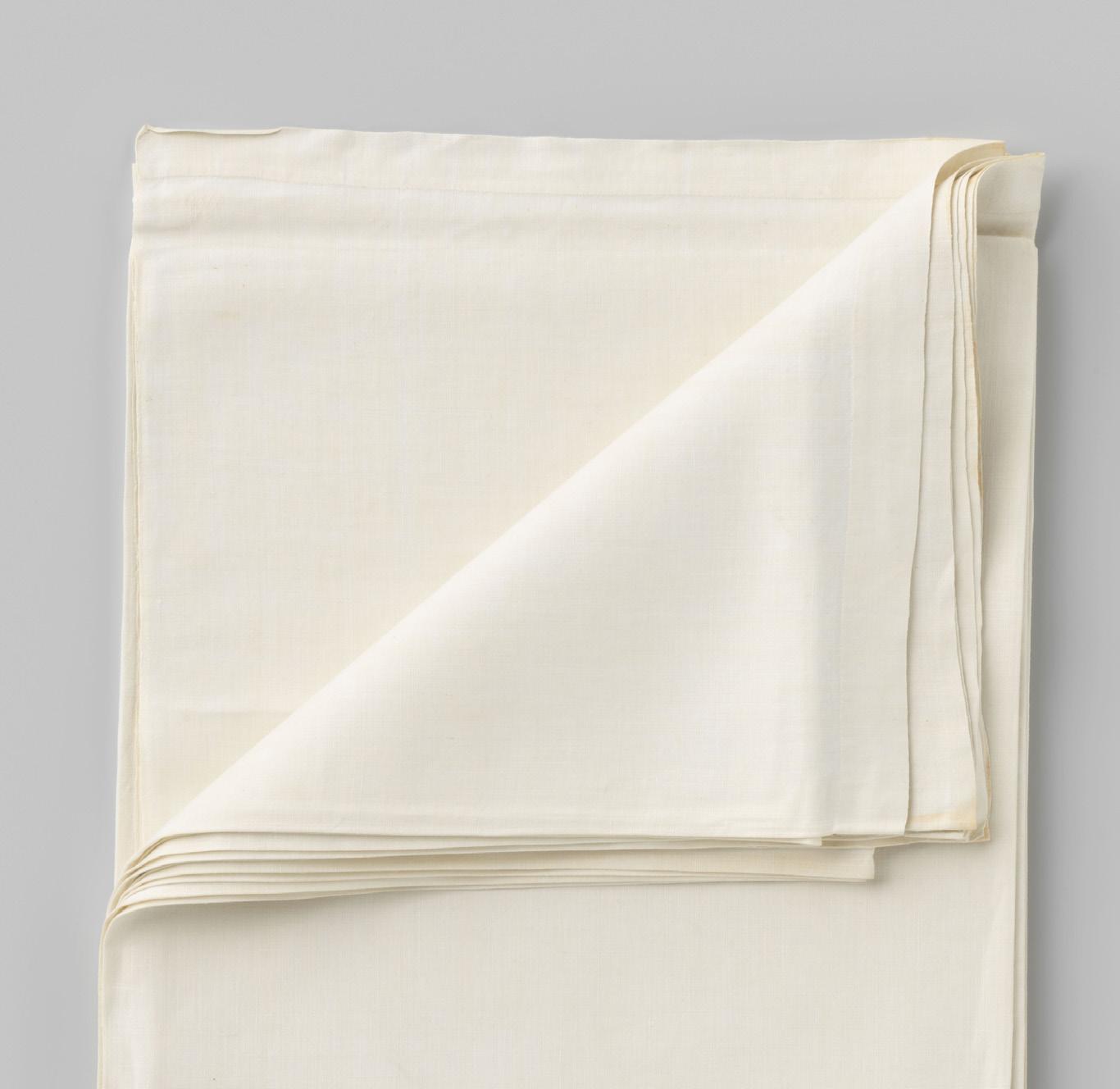


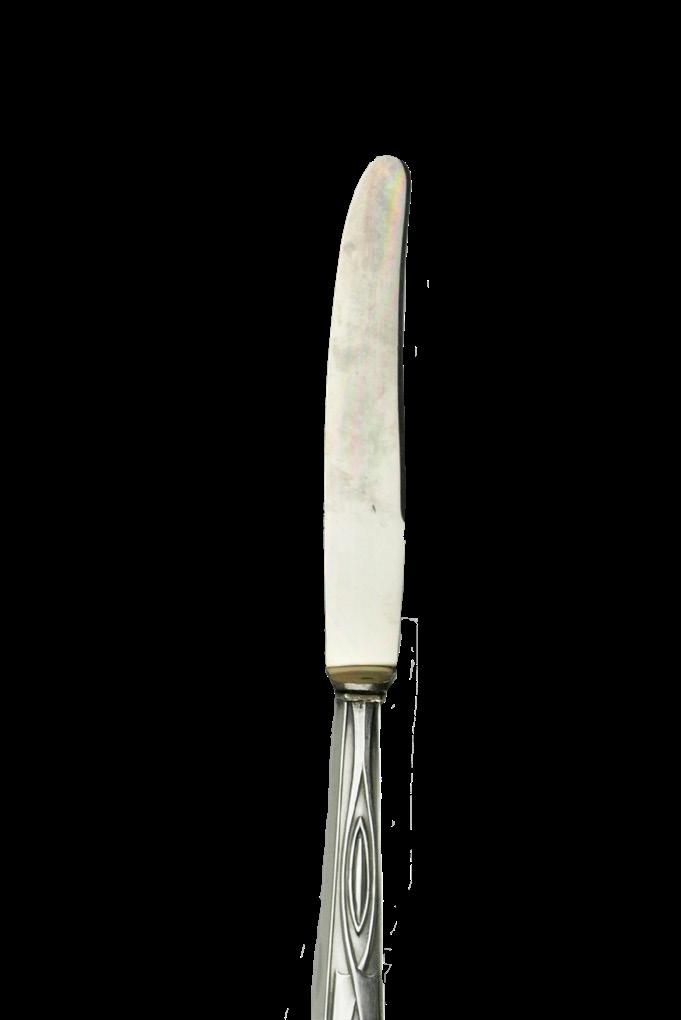

Five seconds on the clock. The yellow light reflected off the court and spotlighted my housemate, Blake Austin. She is taking the last free throw, one that would determine our team’s fate. After being fouled by number 10, a seemingly hypercompetitive law school student, Austin prepares to take her shot. The room vibrates with silence and good luck because of the way we — the fervent fans — wiggle our fingers straight-armed in front of us. Austin casts the ball forward and, as if our sideline wish was granted, the white crossed pattern of the net hugs the ball as it passes through, signaling our win. And for the first time, I finally understood why my dad enjoys watching sports.
The previously static room raged into an electric
Story by Caroline Page ’26
Design by Jordan Lerner ’25
boom. Supporters and teammates jumped up and down while “All I Do Is Win” by DJ Khalid played on a black, handheld JBL speaker at its maximum volume. From that moment, I decided to spend most of my Monday nights like this, courtside with the intramural team featuring most of my housemates.
Intramural sports have a long history that predates my Monday nights spent at the Student Recreation Center. In “A Brief History of the Intramural Movement”, Ralph E. Stewart explains that intramural sports officially date back to the appointing of intramural directors at the University of Michigan and Ohio State University in 1913. Although there had been demand for recreational sports, this also required organizing equipment,
facilities, and more, demanding structure. For this reason, the university’s appointing directors created a framework for other schools to implement. They built the core of intramural sports from scratch.
Stewart explains that, at the University of Michigan, Latin Professor A.S. Whitney, was the one who coined the term. He used Latin words: “Intra,” meaning within, and “muralis,” meaning walls, resulting in the word “intramural” referring to competitive sports within an institution’s “walls.” This term went on to label the programs which would promote physical education to this day.
According to The College of William and Mary: A History by Susan H. Godson, the first mentions of intramural sports were after 1918. But how does the program work in the present day? Here at the College of William and Mary, teams designate their captains, whose role is registering players. There are four leagues. The men’s, the women’s, the corecreational (co-rec), and the fraternity league. There are also a wide range of sports available to play, depending on the season. Once registered, teams play four games which determine their positions in their respective bracket. The winners of the brackets win the renowned “T-shirts,” a symbol of their success and an access key to bragging rights.
This detailed system is meant to support students in their physical and mental well-being. In Stewart’s article, he explains how intramural sports were developed in the late 19th century after professors of physical education noticed the boosted interest brought by the competitive nature of the program. They believed that it was imperative that organized sports were not restricted to varsity athletes. Basing teams off clubs, classes, Greek Life, and other social groups provides camaraderie that champions the competitive spirit. It is because of this enthusiasm that students are more inclined to participate in physical activity. This participation also benefits students by teaching them about new sports.
Here on campus, new players have reported that learning about a sport encourages their activity levels outside of the intramural setting. One example is Danny Maloney ’26. Maloney started playing volleyball on a co-rec team for the first time last spring as a freshman. Learning the rules led him to play once or twice a week with friends in his fraternity. “It was a really fun brain break from studying,” he said. Maloney’s experience demonstrates that intramural sports are not only
supportive of learning new sports, but also a way to take a break from the demanding schedule of a college student.
For many players, intramural sports do not only serve to improve physical well-being, but also to improve mental health. There is no question of the links between physical and mental well-being, but what intramural sports offer is an inclusive community. The games are casual and therefore become social events. Cristian Charette-Lopez ’25, manager of the Latin American Student Union team Los Tornados, touches on the lively spectatorship that goes on during games. He loves to embrace his managerial role to the fullest, which on occasion even means attending the games in a full suit. “It’s really entertaining for me, but also really amusing for my peers and it’s always great to put smiles on people’s faces, especially around exam periods,” he said. What Charette-Lopez points out is that these games are a structured time to take joy in being around others, easing the pressures of the world beyond the campus recreation walls.
Grace Lorch, a referee and player, emphasizes this pillar of intramural sports when recounting her favorite memory with her flag football team. One day, they had to forfeit their game, but stayed to play on their own. Although they forwent a win, the team realized that it brought them together in a way they “didn’t necessarily expect,” she said. In that moment Lorch realized that intramural was a space where she could spend time with those she cares about. This, she believes, speaks to the “wonders about the role it serves in our community.”
Intramural sports not only build friendships, but for some has been a place to find love. Hannah Potts ’25 tells the anecdote of her roommate and her roommate’s boyfriend, an intramural love story. She explains that the two joined the same team as a way to meet new people the spring of their freshman year. By the end of the season, they began dating, and Potts added that “they have been together ever since!” Between new friendships or potential significant others, the quality time spent together in intramural creates a space for new relationships to flourish and solidify.
Stewart’s observations about the “why” behind student involvement in intramurals focus less on the social components and more on the competitive spirit that energizes students to be active. But what
happens when that competition is not so friendly? Students have noticed that intramural sports have the potential to reinforce social barriers between clubs and organizations, due to the cutthroat nature of some of the players. Julia Beverly ’26 revealed that, although within one’s own team, playing can be a major morale booster, in competition “it can get really competitive and rough sometimes, and some teams can take it really seriously and start being pushy.”
Although these “pushy” players are infrequent, they can be quite impassioned. I have seen how one fiery fight with a referee can lead to a team’s loss of temper and tempo, ultimately causing the game to be scrapped altogether. In addition to the intensity of select players, intramural sports can cause polarization of groups due to its barriers to entry. Some of the clubs and organizations require members to pay dues and oftentimes paying members are the only ones allowed to play. Fortunately, the vast amount of teams available counters this barrier. Students who cannot play on one team can find another, but it is the importance of being on a winning team that is often left to be desired.
Much of this rough competition and exclusivity can be found in the fraternity league. Because of the high cost of fraternity dues, being a member is a large financial decision which restricts some students from being a part of this league. In addition to the monetary hurdle, there is the obstacle of an inferred athleticism when registering. Andrew Jones ’25 discloses that he mainly plays for co-rec
teams because he feels that the fraternity leagues “are blocked off by the more traditionally athletic members.” But why does the fraternity league exist if members with a higher level of athleticism are socially obligated to play? Why wouldn’t these players play club sports instead? When asked about the relationship between fraternities and intramural sports, Oliver Sun ’25 explained that, “with a frat’s ego on the line, it is a total war!” Although Sun’s comment affirms the intensity of the fraternity league, he simply reiterates the ideas from Stewart about the innate rivalry caused by the program. Sun, like many students, believes that the intramural programs are a non-exclusive environment for everyone “despite social class, clubs, or Greek Life organizations.” His description of the program highlights the distinction between intramurals and other sports teams on campus. He reveals the dichotomy between the tension defined by the social construction of teams, and yet the equal opportunity for students to play.
These social constructions can be polarizing, but as a consequence of the basis of intramural organization, these constructs are necessary for the program to function. Kenly Howerter ’26, who is both a referee and player, stresses how her roles have allowed her to learn about clubs she was not aware of. Through her unique job opportunity on campus, Kenly observed how the social structures embedded in intramural sports become fluid on the court. Although groups are in competition, it is the rivalry that drives the clash of clubs and organizations. This brings the wider community together, hence making intramural sports the crux of the campus’ interrelations.













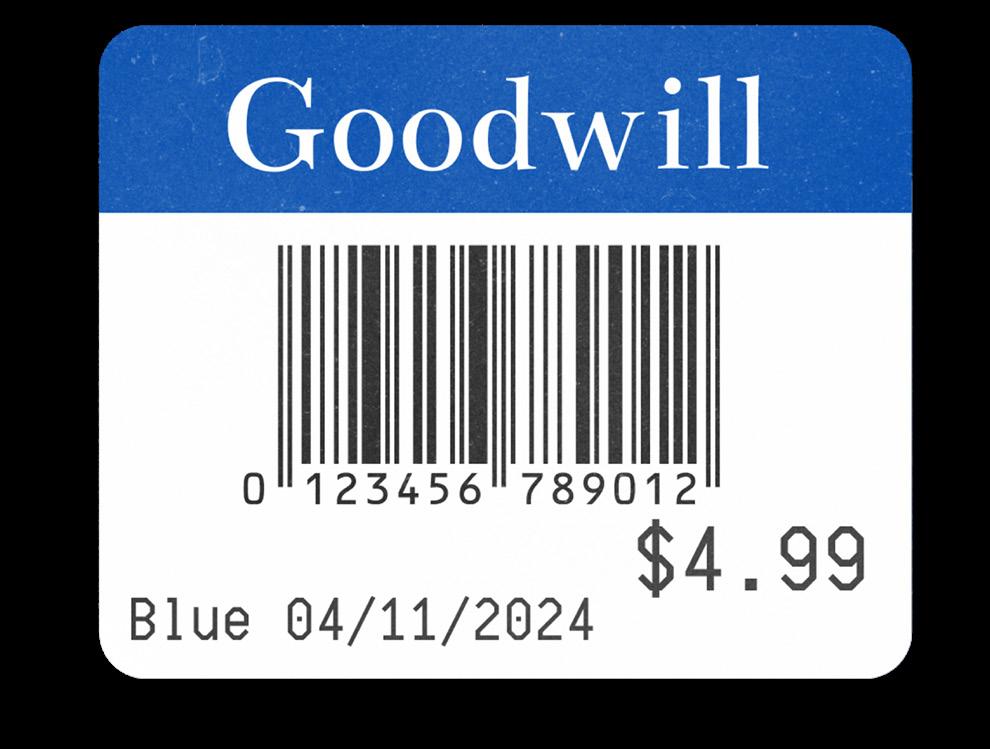



Produced by
Grace Rivera ’26
Erin Chan ’26
Adia Elcock ’27

Modeled by
Liz Liner ’25
Kerri Chimento ’25
Nevaeh Galluccio ’26
Sristhi Nadar ’24
Photos by Ryan Goodman ’25
Design by
Marion Biondi ’24


The Goodwill is practically a part of the William and Mary campus, so incorporating it into a photoshoot in some way was only fitting. Giving them all $25, we had models pick their outfits and they created looks that reflected their personal styles. The resulting looks ranged from a 60s beachy aesthetic to grunge-inspired ensembles, modern country vibes, and even a whimsigoth layered look. The fusion of the pieces in Goodwill with the creativity of our models brought forth a captivating showcase of individuality and style.
– Grace Rivera ‘26








Article and Design by
Katie Fitzgerald ’26Photos by Katie Fitzgerald ’26
and Ava Fischer ’26
Graphic by Jordan Lerner ’25

Katie Fitzgerald ’26 and Ava Fischer ’26 drive all around Williamsburg to find the true contender for the best iced vanilla latte for a broke college student.
I am, to possibly no one’s surprise, an enthusiast of “silly little drinks.” Most, if not all, of my dining dollars go to coffee, tea, or smoothies, and whether or not my bank account is impacted by this is up for debate. However, I am not alone in my love for silly little drinks — my close friend Ava, who transferred here last fall, is a barista at a local coffee shop back home called Grit, which has recently expanded to the Williamsburg area. With yet another coffee shop opening in Midtown this past February, the two of us asked ourselves: Which local place brews the best coffee? We all have our opinions on the Williamsburg classics, such as Aromas, Bake Shop, and Column 15, but upon ordering the same item from each place, how do they hold up compared to each other?
We first established the drink: An iced vanilla latte with oat milk (because Ava and I have sensitive
stomachs). It’s a classic item you can get from pretty much any coffee spot, but many places put their own spin on the item using different syrups and blends. Of course, there’s more to a place than just its drinks, so we considered atmosphere, location, and price as well; because, let’s be honest, sometimes we like to linger while we sip.
With these criteria in mind, we put together our list: Aromas, Bake Shop, Column 15, and Spoke Art and Provisions. For the purposes of this piece, we decided to stay local because one can get Dunkin’ or Starbucks anywhere in the US. Yet, only in Williamsburg can you get a Bake Shop Breakfast or a Williamsburg White. However, there remained one exception: Illy Caffè. While it is a chain, it’s in so few locations that Ava and I felt comfortable reviewing it in this piece. So, on the morning of March 3, we embarked on our journey and drove onto John Tyler Highway.

The Noah Kahan music we listened to on the way to Spoke started our day well because the building itself was adorably quaint, and the barista working that morning was incredibly sweet. We were some of the only people there, but the quietness was a nice change of pace and a breath of fresh air compared to Williamsburg’s many bustling coffee shops. The local art adorning the walls and the array of products (including their own water!) added to the atmosphere. Spoke serves all coffee in a singular size, explaining the set price of $6 , and our latte was fantastic. The oat milk was creamy and, while the brew was strong, Ava noted that the beans themselves were roasted well. The included syrup was of the 1883 brand, which she noted is “pretty fancy.” Despite the distance, we think it’s a great location if you want to go on a coffee date or spend some time away from campus. “I feel like you
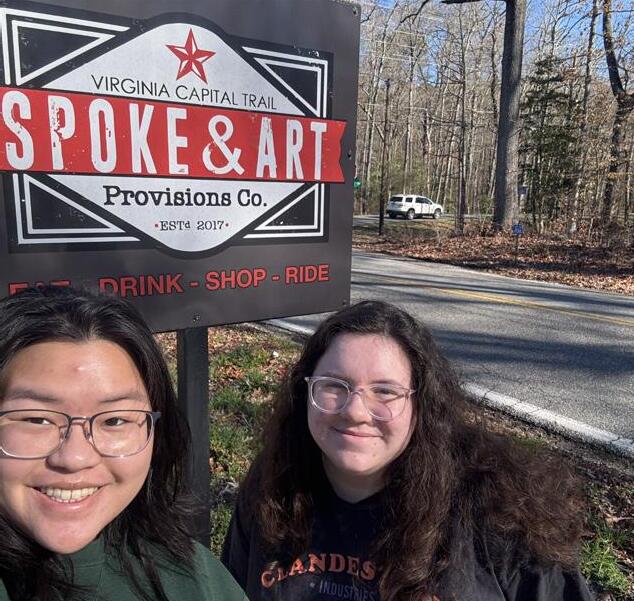




one at which we got breakfast as well, splitting an omelet, coffee, and muffin. While the omelet and muffin were pretty good (with us getting a pretty good cheese pull from the omelet), the latte was underwhelming. At $6 for a small, the espresso beans themselves were incredibly burnt and the vanilla syrup felt nonexistent. Ava suggested that it could have been a result of proportions, but regardless, it was a bit too burnt for either of our tastes. Even amidst the rush hour and our inability to hear each other at a normal speaking volume, we both loved how close it was. For our upperclassmen who are familiar with “Swemromas” and the shortlived “Sadromas,” if nostalgia is creeping up on you, it might be worth visiting the original location for a nice brunch. However, we’d both suggest avoiding the lattes, especially in the small size.
Following the introduction of Column 15 to Swem Library, the two of us were curious to see how it differed from the on-campus location — and if it was any better. Upon first entering, the science theme really stood out, a stark difference from the other places we’d been to thus far. The space felt full, not to mention all the students studying there. We also ran into Emma Saunders ’24, a former Flat Hat Magazine staffer and “huge fan” of Column 15, who highly advises you to check it out, and we can’t help but agree. Column 15’s off-campus location offers plant-based milk alternatives at no extra price and packs a punch when it comes to teas and coffee. However, even with the fun ball shape, the ice really diluted our latte, making it taste more like coffee than the espresso we hoped for. With the cute atmosphere (albeit, an incredibly dark room), we would suggest you take a stop by, but try their iced chai instead.


Rounding out day one, Ava and I visited Illy Caffe in Merchant’s Square. The vibe and layout of the location were nice, situated mere minutes away from the Wren Building. The interior was well-spaced out, and we could actually hear each other when we talked. The latte was pricier than Column 15, but nowhere near Aromas’ $6 small. It came unstirred, but even upon mixing it up, it had a burnt texture that Ava immediately noticed. While it did have a creamy and smooth texture, the burnt aftertaste crept in after every sip, drastically impacting our opinions of the latte. The more of it we drank though, the more it mellowed out, so if you can get over the aftertaste, you might enjoy the lattes they serve here. But with its proximity to campus, it’s definitely a good spot to visit if you want a nice change of pace from the on-campus

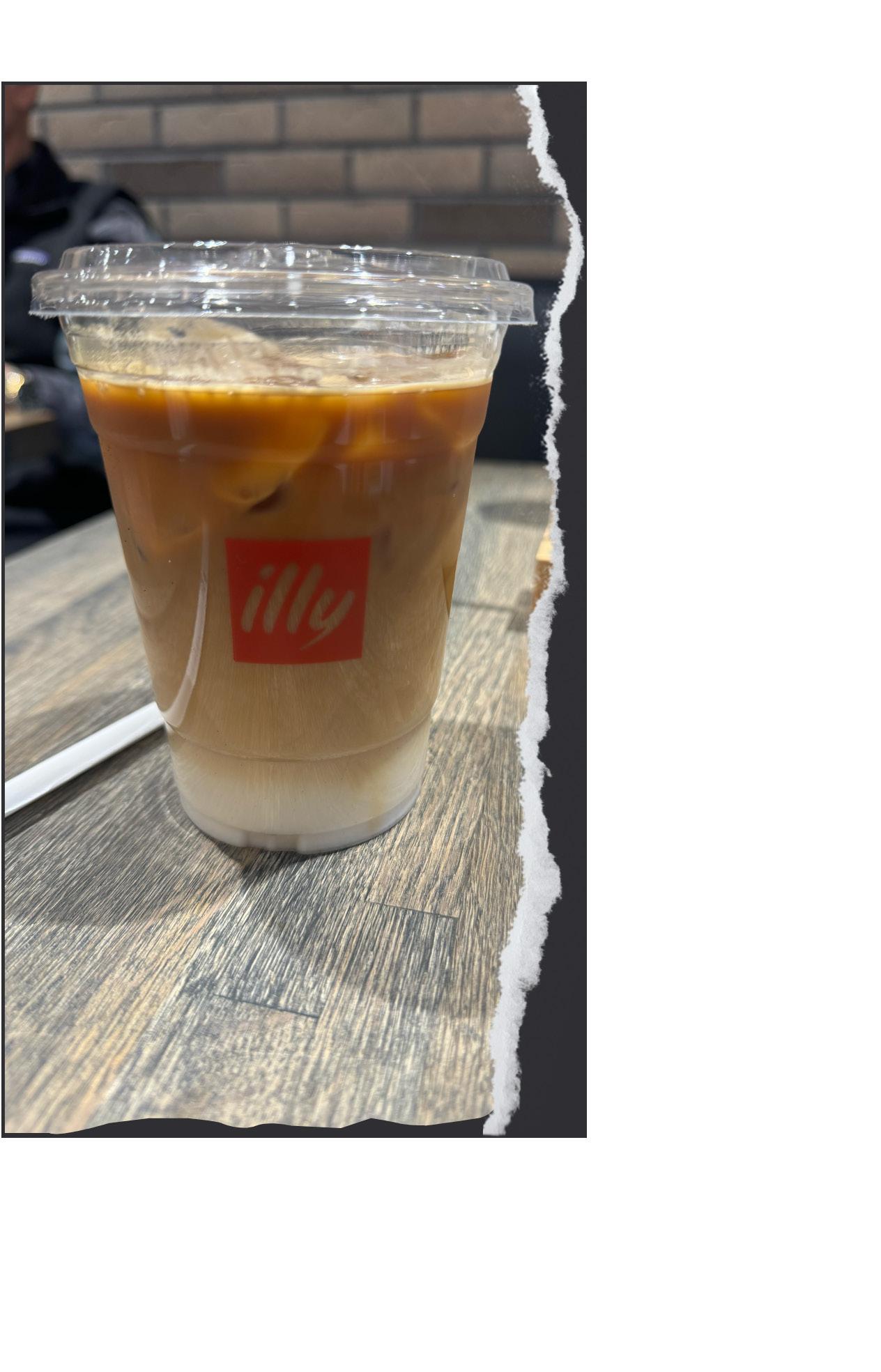
ATMOSPHERE

Last but not least on our abbreviated trip exploring Williamsburg’s coffee offerings, we hit the ever-popular Bake Shop. Located minutes away from campus, this spot is a pretty popular place among students for spending dining dollars. Besides our latte, we both ordered other items, but in my opinion, the latte stood out the most. After getting our items, we noticed all the chairs outside were wet, leading to one of our biggest realizations: If you want to sit and have your little “Bake Shop breakfast” on a rainy day, you probably need to take it somewhere else. The latte itself, however, was pretty good, albeit an extra dollar for the vanilla syrup was a little surprising for both of us, especially considering it was slightly hard to taste. However, the beans weren’t burnt and were grounded well, blended well and had a nice milky, buttery flavor. While some may say Bake Shop is “falling off,” we strongly disagree; but maybe just use your dining dollars here rather than your savings.

So, where does this leave us? After thorough consideration (and a bit of disappointment that we couldn’t hit a few more places), our favorite, so far, was definitely Spoke. Despite the trek we had to take to get there, the place was so quaint and lovely, and it had some really killer coffee. The employees were incredibly kind as well. It’s a great study spot and, for those of you with cars, might be a nice change of pace to visit. However, if you’re stuck on campus, Bake Shop might be your best bet for a nice iced latte. Ava mentioned to me how in most lattes, the majority of what you pay for is the beans; and if we’re spilling the beans, we felt like Spoke was the best taste and quantity for what you pay for. In dead last, controversially, is Aromas, however, we’d both like to note that our typical Aromas orders are other caffeinated drinks, and usually not their lattes. No tea (or shade) to them, they definitely have our respect. We hope this opens you up to the world of coffee in Williamsburg, and stay tuned for the next issue in which Katie and Ava try five different varieties of the Panera Charged Lemonade!



Out of the many novelties that my first semester of college brought last fall, one of the things I was most nervous about was my use of Dining Dollars. It took me a few weeks to finally tap into the All-Access plan’s 400 Dining Dollars, and when I did, I was very restrictive. As the semester went by, I began figuring out the best ways to use the “fake money.” Now, in the spring, I have given up on being conservative with my Dining Dollars. I may have the least number of Dining Dollars left among my friends, but from the wonderful gastronomic experiences I get, I have absolutely no regrets. From grabbing a pint of Ben & Jerry’s at the convenience stores to ordering Domino’s for our dorm’s Super Bowl watch party, there are so many different ways to spend Dining Dollars around campus and Colonial Williamsburg. Here are the crème de la crème.
My favorite spot to use my Dining Dollars at is everyone’s favorite CW bakery: The Bake Shop. Even their plain bagel is not so plain: it is green and gold, exuding tribe pride. Although The Big Bird, my beloved baguette sandwich, was discontinued this winter, I have already found a new favorite Bake Shop Breakfast sandwich in the portobello mushroom variation. The blend of cheese, egg, and mushroom packaged in a flavourful black garlic and sea salt bagel provides the emotional support I need on a stressful day. On a Friday afternoon a few weeks ago, I waited in a surprisingly long line with rain pouring onto my head just for this sandwich. The storm and seemingly endless wait were well worth it. When I approached the cashier to order,
I heard the back kitchen announce that the garlic and salt bagels were fresh out of the oven. As I took a bite from the much anticipated sandwich, my mind forgot that my hair was wet, my shoes were drenched, and I had class in forty minutes. All I felt was the soft cloud of the bagel filled with the delicious omelet and salty cheese.
That meal got even better when I moved onto the classic maple pecan sticky bun that I had ordered for dessert. This menu regular is a must-try and my roommate’s go-to order. And what’s not to love? The yeasted dough covered in a sweet glaze and topped with tangy cream cheese frosting is to die for.
The muffins, however, are my favorite offering out of the pastry case. The chocolate chip banana is my favorite, and whenever I see it posted on The Bake Shop Instagram, I always check my schedule to see if I can squeeze in a Bake Shop run. But really, all of their muffins are delicious. I’ve tried an interesting orange cream muffin that was delightful, and the double chocolate chip rendition was the best companion on my long train ride home for winter break.
A fairly recent addition to the menu is the cronut. This cross between a croissant and a donut is served with a new delectable filling every day. I have had the Boston cream cronut, and although I am not a fan of the donuts of the same flavor, I cannot recommend this treat enough. It is more flaky, sticky, chocolatey, and best of all, more creamy than I could have wished.
Bake Shop also has amazing lattes, but my number one coffee spot to use my Dining Dollars at is Column 15. I am at the Earl Gregg Swem Library every single morning, and I think I now have a pavlovian response to the entrance and need to take that left turn into Column 15. There’s nothing better than starting my day with my favorite order, a Milky Way Latte. Something that I love about Column 15 is that, in addition to their very fun specialty latte flavors and Drink of the Week, their menu boasts a wide variety of syrups that you can mix and match to get a new flavor or discover a new favorite. I love the caramel and hazelnut duo,


and lavender lattes have brightened up dark winter days. Watching swarms of friends leave their bags at tables in Read and Relax and walk to Column 15 for their morning drinks is a common occurrence. I have endless BeReals of my friends gathered around the pick up counter waiting for our drinks.
Coffee can only sustain you for so long, so for a full meal, Chick-fil-A is a great place to use Dining Dollars. The location alone makes it perfect for whenever you want to shake things up and not go to The Caf or Sadler. While the selection may not be as varied as our dining halls, the menu is loved by all of the picky eaters in my dorm. Whether you love the classic chicken nuggets or need to make sure there are absolutely no pickles on your sandwich, the order process allows the customer to customize their order. My friends and I go to Chickfil-A every Friday, a tradition I hope to continue next year. Every week I battle through my final classes before the weekend with the great joy of knowing that all of my friends will be tightly packed
into the busy restaurant once again. Oftentimes, school work and extracurriculars keep us too busy throughout the week to find times to simply hang out in each others’ company, but I know that no matter how many times I see them during the week, I will see them at lunch on Friday to debrief and catch up on everything happening in each others’ lives.
Dining Dollars give me the opportunity to treat myself and add a little flair to my day. In the most stressful and hectic weeks of the semester, Dining Dollars serve as a lifeboat, giving me little nuggets of happiness in the form of snacks, coffee, or a meal. It feels like a nicer outing than just walking out of the dorm and into Caf. My friends and I treat our walks to Bake Shop as adventures, Column 15 visits as revitalizing study breaks, and Chick-fil-A lunches as celebrations of friendship, life, and good food, making memories along the way. And if you ask me, there is no better way to spend money than that.




How the term rose to prominenceand whether it is another wolf in sheep’s clothing for women.
While scrolling through TikTok, you stumble across a video of an actress shooting a mean glance in the direction of her female co-star. Scroll again, and you see a video where a young woman explains her distaste for female friendships. The comment sections on both of the videos are similar; hundreds of commenters repeat the phrase: “she’s not a girl’s girl.”
A “girl’s girl” is a woman who supports other women. Being a “girl’s girl” often includes telling women they are beautiful or making them “appear better” in front of their crush. It can also look like cultivating close female friendships or advocating for another woman in a room full of men. In short, being a “girl’s girl” is about women behaving in a positive manner towards each other.
“Girl’s girls” are a reaction to the viral “pick-me girl” trend, which takes its name from a scene in Grey’s Anatomy wherein the title character asks her married boyfriend to “pick” her over his wife. “Pick-me girls” are generally considered the worst possible type of woman. Originally, the term only applied to women who disparage their female friends to impress men, but has grown to apply to any woman who “unjustly” criticizes or presents herself as better than other women. This ranges from flirting with another woman’s partner, to comparing oneself to another woman, or behaving rudely towards a female friend.
It is difficult to pinpoint the origin of “girl’s girl,” but it appeared on TikTok in 2023 and immediately exploded in popularity. Women widely championed female solidarity and celebrated the uniqueness of the female community. This fad ultimately led to a celebration of girlhood and the embrace of all things girly, including bows, flowers, and the color pink. It seemed like every woman wanted to be a “girl’s girl,” and women collectively fought misogyny by promoting togetherness.
This outburst of community, however, had nearimmediate consequences. While on the search for “girl’s girls,” women and girls who displayed “pick-me” behavior were hunted and disparaged. A remark about preferring male friendships over female friendships led to a comment section flooded with negative remarks about the woman who made the post. Women’s actions were carefully scrutinized, and common behaviors were assigned labels and vilified. Despite the apparent increase in solidarity, women were still put down by other women in the name of being supportive of girlhood.
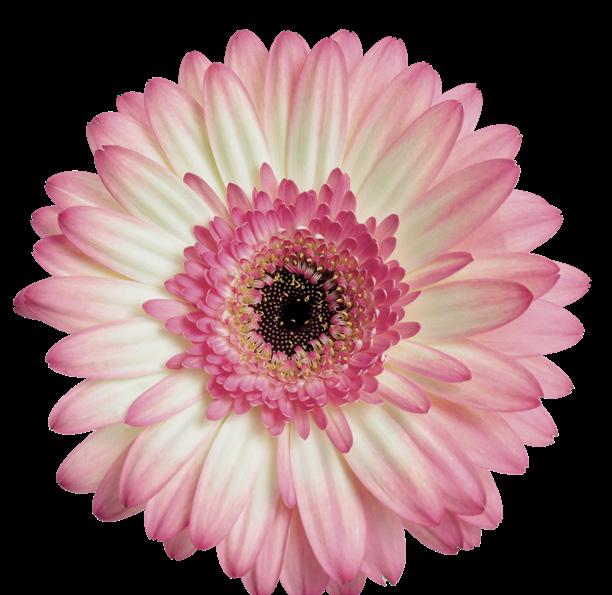
Female celebrities often see the most scrutiny when it comes to being a “girl’s girl.” When actress Millie Bobby Brown admitted she does not have many female friends, commenters immediately labeled her as a “red flag” and claimed she is “not ready” for her pending wedding with Jake Bongiovi. Many viciously attacked Angela Bassett after she showed
disappointment at losing the 2023 Academy Award for Best Supporting Actress to Jamie Lee Curtis. Both of these situations can be easily explained: Brown grew up on a TV set with very few girls, and Bassett had every right to be upset at losing one of the most prestigious awards in acting. However, the internet’s so-called “girl’s girls” behaved in a reactionary manner without taking into account the lives and feelings of the women they belittled.
The negative effects of the “girl’s girl” movement should not be a surprise. While being a “girl’s girl” seems easy enough to execute, a long history of sexism and “othering” has forced women to perceive other women as competition. A woman cannot just be one of five women at her workplace: she must also compete to be the prettiest, the smartest, the most reliable, the kindest. Sisters are often labeled as “the athletic one” or “the hot one,” each label mutually exclusive and each accompanied by a completely different treatment. Mothers, too, are pitted against each other; from the moment their children are born, they hear comparisons regarding their postpartum bodies and methods for raising children.
they are not conducting themselves in what is quickly becoming the “appropriate manner.” Regardless of intent, this criticism disregards a woman’s life experiences.

That is not to say all criticism from “girl’s girls” is unwarranted. Some women truly behave in a manner that disparages other women. These women need to be confronted with their actions and reminded that women should support each other, not tear each other down. The internet, however, does not support compassion. It has created a culture of immediacy, with some users believing that all necessary information about a situation can be found in one post. Most users don’t look to genuinely help someone; they wish to call them out on their behavior. This constant negativity breeds both “pick-me” and “girl’s girls.”
Unfortunately for “girl’s girls,” it is extremely difficult to unlearn bad habits. Instead of making snide comments about a woman’s body or outfit, they tell women
The concept of the “girl’s girl” has excellent intentions, but has proven to be destructive. While women supporting women should always be promoted, disparaging women should not. “Girl’s girls” show the world that women will no longer tolerate unsupportive communities, but there is a long way to go. Despite subversively promoting negativity, the “girl’s girl” movement is helping women reexamine their attitudes and work towards a more positive future.



 Design by Andrew Johnston ’25
Design by Andrew Johnston ’25
This article contains satirical elements, but remains a genuine critique of yet another mediocre adaptation of a classic childhood book series. To ensure our reporter’s safety, they have chosen to remain anonymous and will be using a pseudonym: Calter Wronkite

For better or for worse, it seems that the new big thing is revisiting beloved franchises and trying to make a quick buck from remaking or rebooting them. Sometimes, this leads to breathtaking films that expand our understanding of these universes with beautiful storytelling and visuals, like Rogue One; other times, we get something more akin to the rest of Disney’s Star Wars films. I remember my excitement upon hearing that the Percy Jackson series was getting a movie adaptation way back in the 2010s. This series, like Harry Potter before it, was one of my favorite books as a kid, but anyone who hoped that the 2010’s Percy Jackson movies would recapture the magic of their source material in the same way that their Harry Potter counterparts did would have been sorely disappointed. So, when they announced that they were trying again to bring this universe into the world of video media, this time in the form of a limited series, I was skeptical.
Unfortunately, my skepticism proved to be wellfounded. The pacing was terrible, with some segments seeming to drag for an eternity, while other parts that seemed more important to the overall narrative were glanced over. Many lines felt forced, and the action scenes were almost nonexistent. To my surprise, audiences and critics viewed the show favorably, with it receiving a 92% on Rotten Tomatoes as of the time of writing this.
Every time Percy prepared for battle by unsheathing Riptide, the camera would conveniently pan away and the battle would last for nothing more than two or three half-hearted slashes between Percy and his adversaries. Some little details were also amiss, like when Percy appeared wet after exiting the water. You might call these nitpicks, but they give credence to the argument that this show was made as a careless cash grab. You can tell when something is a love letter to the source material and, unfortunately for this show, that was just not the case.
This has led many online to speculate that the show was used as nothing more than a money laundering scheme. I am here to quell the rumors with the absolute, definitive truth. Luckily for me, my cousin’s uncle’s friend’s father’s dog groomer also grooms dogs for one of the show’s producers. What follows is the result of my interview with him:
“Instead of being based on the books, the show was based on the real historical events that inspired the books. We tried to remain as accurate as possible,
and I feel like, for the most part, we succeeded. The only major casualty was Percy’s mullet. The people weren’t ready for the mullet.”
After listening to a five minute-long rant about hair styling choices for the series, I attempted to get the conversation back on track by inquiring more about where all the money actually went.
“Well, you see, Zeus has actually been fighting a war against the lizard people for the last three years now, and none of the other gods really want to get involved. He and their leader, Mark Zuckerberg, have some serious beef. Zeus is basically just really ticked that Facebook rebranded to Meta because he apparently came up with it first and told Mark, but his idea went uncredited. My sources tell me that the majority of the money went towards the purchase of the spy pigeons Zeus deployed to keep a watchful eye on Zuckerberg. Also, regarding the “Riptide-notbeing-on-screen” thing, they were actually lent the real Riptide from Percy himself in exchange for a can of Zyns, but people might have thought it was weird if it looked too real, so we kept the transformation mostly off-screen. Also, that thing is really sharp, so they tried to avoid having the kiddos swing it around too much. Percy may have fallen upon hard times as of late, but his mullet is still as majestic as ever, at least so I’m told.”
After another seven-minute tangent about Percy’s mullet, I tried to make sense of what I had just been told.
“So, Mark Zuckerberg is a lizard — that part tracks. But the spy pigeons and a war with Zeus over a poorly advised rebrand?”
“You bite your tongue! Meta was a stroke of genius and you know it! Everyone knows about the spy pigeons. Their eyes are cameras and they can remain operational 24/7, so long as they sit on power lines to recharge their batteries at least once every couple of days. I’m told some of the new ones even have ChatGPT integration! As for the actual details of the war itself, I don’t want to get into too much depth, as to protect Zeus, but I am told that he just upgraded his town hall to level 13. Zuckerberg is cooked!”
Either these are the facts, or my source is on some manner of hallucinogen and most of the money went towards the appearance fee for Lin-Manuel Miranda. I have presented as much insight as I can. The rest is for you to decide.

My tongue is sacred, I speak upon what I like Protected, sexy, discerning with my time Your energy is yours, and mine is mine
What’s mine is mine
The urge to see your favorite celebrities as good people seems logical—but is it really? A little meditation on celebrity worship and the responsibilities of fame.
The bridge of Ariana Grande’s 2024 single “yes, and?” serves two purposes: It establishes Grande’s worth as an artist, and then establishes that worth as independent from public judgment. With the line “my tongue is sacred, I speak upon what I like,” Grande simultaneously defends the value of her art and control over her public persona, stating that she is not obligated to explain her actions to others. As the bridge continues, she further enforces this separation between her and her critics with the line, “your energy is yours and mine is mine.”
Not only is her life separate from that of her critics, but so is her entire life force — her “energy.”
With these few lines, Grande lays out the context necessary to make the meaning of her song’s hook clear by the end of the bridge. “Yes,” what you say about me is true. “And,” why does that matter? We are separate people, so why does it matter to you if what I do in my private life is morally good?
Grande released “yes, and” in response to some particularly vicious criticism she received after starting a relationship with Wicked co-star Ethan Slater. Slater and Grande were both getting divorced from their partners when they began dating, and this quick turnaround caused some confusion in the timeline for fans. Many labeled Grande as a “cheater” and a “homewrecker” under the mistaken impression that Slater was still married when Grande pursued him. In the wake of this controversy, several interested parties began to dig up other Grande scandals — including her blackfishing allegations and 2015’s “donutgate” — in order to paint her as a generally rude, self-absorbed person. These scandals, coupled with Grande’s unique response, invite us to consider a broader version of the question Grande asked in “yes, and?”: Why do we care if celebrities are good people?
When I consider this question, the first thing that comes to mind is the common fandom mantra: “we made the right person famous.” This simple statement comes with a few loaded implications. One: Fans — essentially, ordinary people — determine who can achieve unimaginable stardom.
Two: There is a wrong person that can be “made” famous. And three: Fame is a good thing, even a reward. These three implications lead to the most obvious reason why people want celebrities to be
good people: Because fame is a good thing, and we shouldn’t give good things to bad people. Therefore, bad people are undeserving of fame.
This conclusion assumes that fame is a good thing, which in itself is debatable. However, even if we accept this assumption, the statement still creates a causal relationship between moral character and fame, which is nonexistent. Fame has never been a reward for good behavior — it is a reward for talent, artistic ability, or even just an engaging persona, none of which are dependent on one’s moral character. Saying you “made the right person famous” is a statement of luck, not responsibility. What person has ever started listening to Taylor Swift, Beyoncé, or Ariana Grande, just because they’re good people? This paints an unrealistic picture of how people rise to fame; personality only begins to matter after they have reached stardom.
Maybe personality doesn’t factor into how someone becomes famous, but shouldn’t it play a part in whether they’re allowed to stay famous? After all, with fame comes a platform, and with that level of influence comes responsibility. To pay no mind to who holds this responsibility is reckless. I agree that celebrities shouldn’t be allowed to use their platforms to take advantage of their fans, promote hate speech, or commit crimes. This goes beyond a celebrity simply being a bad person; when one is actively weaponizing their fame and their platform, it’s time for fans to exercise their power and revoke the platform.
But when Ariana Grande started dating Ethan Slater, she wasn’t using her platform for anything: She was making personal decisions in her personal life. Her actions are akin to when Taylor Swift was “being obnoxious” at the Grammys, or when Raquel Leviss “caused the breakup” of her Vanderpump Rules co-stars. The media may have widely publicized their behavior, but it doesn’t have to affect their fans. Arguably the most infamous example of a celebrity being picked apart for bad behavior is Britney Spears. Her mistreatment is now widely recognized as cruel and misogynistic, as is the absurd expectation of her to act as role model to her fans (which was used to justify a large
portion of her mistreatment). We no longer widely expect celebrities to be role models, but how is our modern criticism against them any different than the criticism against Spears in the 2000s?
Consider Grande and Slater once again. If this scandal occurred in the Britney Spears era, the backlash against Grande likely would have been: “How could she do this? Doesn’t she know she has young fans to set an example for? She is promoting cheating and homewrecking!” But that’s not what people said; rather, it was just, “how could she do this?” We’ve thrown out the justification for expecting celebrities to behave themselves in their personal lives, but we haven’t yet thrown out the expectation. I suspect that’s because it is a more selfish, purist urge than what was felt in the 2000s. We know why we hold onto our expectations — we’re just afraid to say it out loud.
I’m sure there’s a portion of people that truly want to maintain the cosmic order of rewarding good behavior and punishing bad, and therefore want to revoke fame from bad people. However, I believe that is not the majority because, let’s be honest, we don’t criticize celebrities because we’re altruistic. We do it because it’s fun. It’s enjoyable to exercise power over powerful people and to see a fame-hungry tyrant brought down a peg. Plus, hating on a celebrity is “punching up,” so a celebrity scandal is a guilt-free pass to let out all of your negative energy upon a deserving party. Perhaps one of the most dramatic examples of celebrity hatred on social media is the 2019 backlash against James Charles. Although Charles would later face allegations of greater weight, Tati Westbrook’s “Bye Sister” video exposé didn’t accuse Charles of much more than supporting Tati’s competing hair vitamin brand, being rude at her birthday dinner, and hitting on a straight man. But this did not stop the mass unfollowing and online hatred against Charles. And why did we do it? It’s not because we cared about hair vitamins; it’s because it was an excuse to berate a celebrity, and hating on celebrities is guilt-free fun.
However, the fun that comes with venomous hatred brings up another problem that plagues celebrity moral policing: misogynistic and homophobic double-standards. Most of the examples I’ve mentioned thus far are of female celebrities, as women in the public eye are generally held to a higher moral standard and are attacked more viciously when they fall short of expectations. Similarly, in scandals involving both men and women, the women involved are far more likely to be blamed. Take Grande and Slater, Raquel Leviss and Tom Sandoval, or even Monica Lewinsky and Bill Clinton. The spotlight shines on the woman involved, and it’s rarely for good reason. Even less acknowledged is the double-standard between straight and queer celebrities. James Charles, for example, was automatically labeled as a sexual predator in 2019 — despite minimal evidence — because of homophobic tropes about gay men. Many people admit to finding joy in hating celebrities. What they don’t admit is that because of our heteropatriarchal culture, it’s more fun, more permissible, and more common to hate on queer and female celebrities.
Hatred for hatred’s sake makes up a large portion of celebrity criticism, but it doesn’t account for some of the most vocal moral police: fans-turnedhaters. In the wake of a celebrity scandal, you’re guaranteed to see the statement “I used to like her, but not any more” all over social media. Part of this is herd mentality, but not all of it, especially in today’s ever-increasing culture of unquestioninglyloyal superfans. In fact, superfan culture actually causes a large amount of moral policing, because parasocial relationships are not restricted to thinking a celebrity is your best friend — they also extend to thinking that a celebrity is your worst enemy.
I’ve established that people don’t initially support artists because of their moral character, but because of their art. The power of this art cannot be understated. Take music, for example. For most, listening to music is an emotional experience. A song can cultivate nostalgia, connect us to the
“IN FACT, SUPERFAN CULTURE ACTUALLY CAUSES A LARGE AMOUNT OF MORAL POLICING, BECAUSE PARASOCIAL RELATIONSHIPS ARE NOT RESTRICTED TO THINKING A CELEBRITY IS YOUR BEST FRIEND — THEY ALSO EXTEND TO THINKING THAT A CELEBRITY IS YOUR WORST ENEMY.”
people we love, or help us through hard times. It’s difficult to become this connected to a piece of art without also feeling connected to the artist. Sometimes, we feel more connected to this artist than we do with our friends or family members, as if they’re the only person that truly understands us. So, when we discover that this artist cheated on their partner, is rude to service workers, or double-crossed their friends, it’s hard not to feel betrayed. It’s hard not to lash out at them, as we would if our friend did the same thing. In this way, moral policing is just an unfortunate byproduct of parasocial relationships.
This explanation holds truth, but it also makes moral policing seem more innocent than it is. More often than not, this betrayal is mixed with a much more malignant emotion: entitlement. Entitlement is the ugly product of a parasocial relationship mixed with the “we made you famous” mindset and a dash of the schadenfreude from hating on celebrities. It’s the conclusion of “we made you famous, and we care about you more than anyone, so you have to listen to us.” When moral policing progresses to robbing a celebrity of agency over their own lives, it can have real harm, even if it is justified as “punching up.” In 2022, Heartstopper star Kit Connor was harassed online with accusations of queerbaiting, ultimately forcing him to publicly come out as bisexual. Billie Eilish was similarly accused of queerbaiting after the release of her “Lost Cause” music video, and although she did not respond to those accusations, she did come out as queer in 2023, almost two years after the video’s release. It’s true that most celebrities, while criticism may bruise their egos, will emerge largely unharmed. But not everyone has the fame, status, and privilege of Ariana Grande or Taylor Swift.
The final nail in the coffin of celebrity moral policing is the existence of PR. Every aspect of most celebrities’ public image is curated, and
there is no way to verify their moral character without knowing them personally. It doesn’t matter how nice they seem in front of the camera: The camera is still there, and as long as it is, we will never have an authentic portrait of their personality. Not only does moral policing have the potential to be harmful, but it’s fruitless. It’s a waste of our time.
This doesn’t mean we have to stop criticizing celebrities entirely (although, the more we decenter celebrities from our lives in general, the better). Rather, we should use our power as fans for better reasons and against people that actually deserve it. Instead of getting mad at Taylor Swift for bringing Lana Del Rey onstage at the Grammys, let’s continue to pressure her to lower her carbon emissions. And if we’re going to criticize her for the purpose of using our power for good — not just because it’s fun — let’s put pressure on the other top carbon-emitting celebrities as well: Travis Scott, Kim Kardashian, and Elon Musk, to name a few. Let’s continue trying to deplatform the celebrities who have actually committed crimes, like Chris Brown, who is currently on tour. The moral policing of celebrities may not always be well-intentioned, but it does showcase the huge amount of power harnessed by fans. If we are more

how and why we use this power, we can genuinely change celebrity culture for the better.


Marion Biondi
Most likely to be friends with everyone in the room
Linda Li
Most likely to have 75 white tee shirts



Lena Smith
Most likely to move to the mountains


Emma Saunders
Most likely to start a short story archive
Mary Beth Bauermann
Most likely to be the mom that steps up



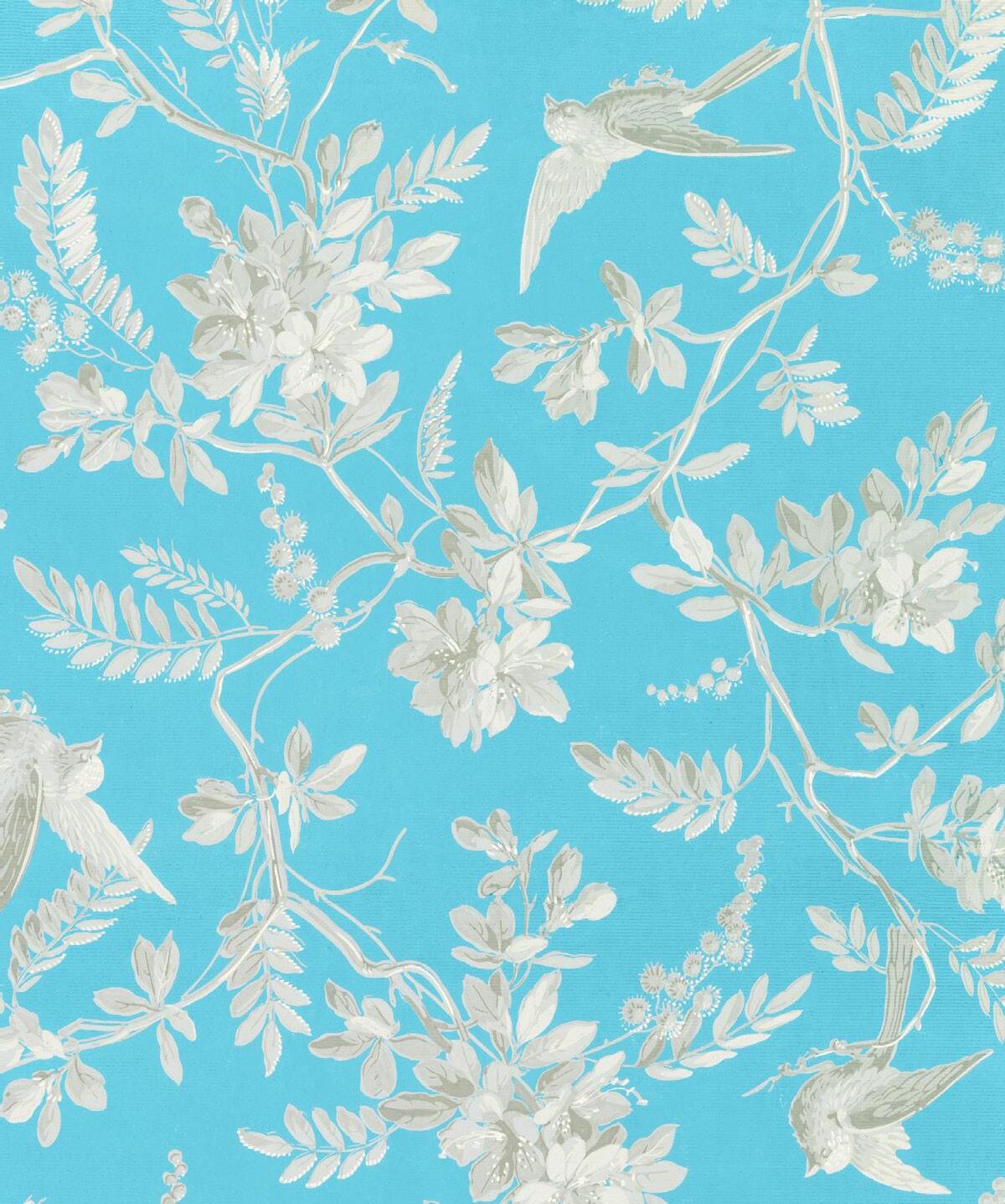
Zachary Lutzky
Most likely to win a Pulitzer Prize for Feature Photography


India Turner
Most likely to travel the world in 80 days

Ethan Kula
Most likely to rewrite the U.S. Constitution




Arianna Stewart
Most likely to have a business blow up on TikTok

Alex Desai
Most likely to move to an Icelandic fishing village
Rachel Bardon
Most likely to be found at a concert
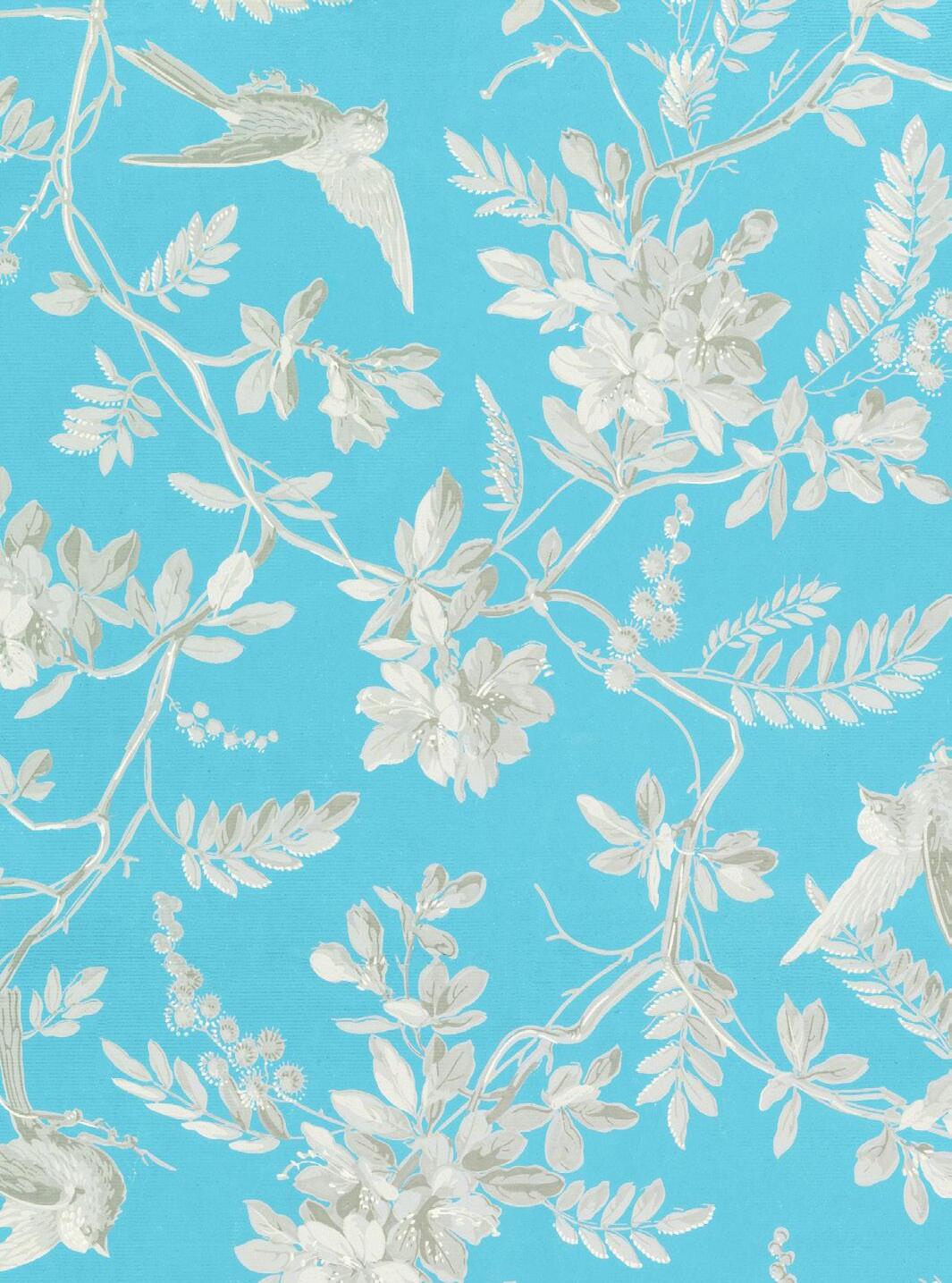


Ellie Kurlander

Most likely to become a late Renaissance art connoisseur
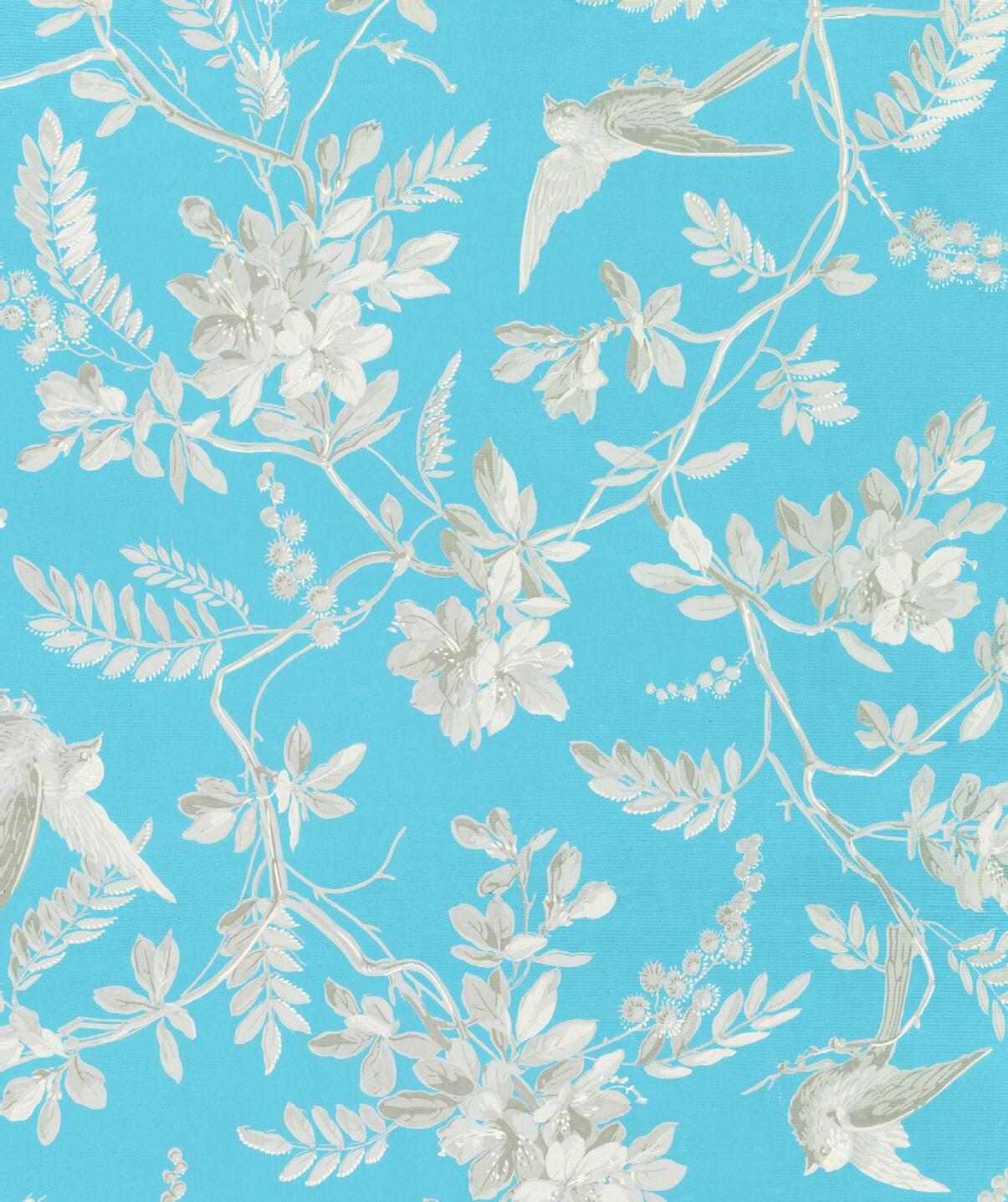

Vivian Hoang
Most likely to stay playful together

EDITORS-IN-CHIEF
Andrew Johnston
Emelia Marshall
CHIEF-OF-STAFF
Rebecca Altman
CREATIVE DIRECTION
Katie Fitzgerald
MANAGING EDITOR
Peerawut Ruangsawasdi
COPY CHIEF
Portia Dai
STANDARDS & PRACTICES EDITOR
Adia Elcock
COPY EDITORS
Rose Anderson
Ariel Dodds
Molly Drew
Amelia Goetz
Caroline Page
Mary Rice
Hannah Sawyer
Lena Smith
Clare Thomas
DESIGN EDITORS
Marion Biondi
Abby Freund
Amelia Goetz
Ellie Kurlander
Jordan Lerner
Remi Marcus
India Turner
DIGITAL DIRECTION
Adia Elcock
DIGITAL EDITORS
Sophia Kaisermann
Alex Nakamitsu
Taiga Lewis
PHOTO EDITORS
Ryan Goodman
Eunice Lee
STYLE DIRECTION
Grace Rivera
STYLE EDITORS
Erin Chan
Hannah McMinn
Aggie Rigo Saitta
Richa Verma
GRAPHICS EDITORS
Zoe Davis
Isabel Li
Syeda Safdar
Danielle Seay
Arianna Stewart
BUSINESS MANAGER
Rebecca Altman
WRITERS
Mary Beth Bauermann
Emma Carmichael
Ariel Dodds
Florrie Sargent
Elizabeth Brady
